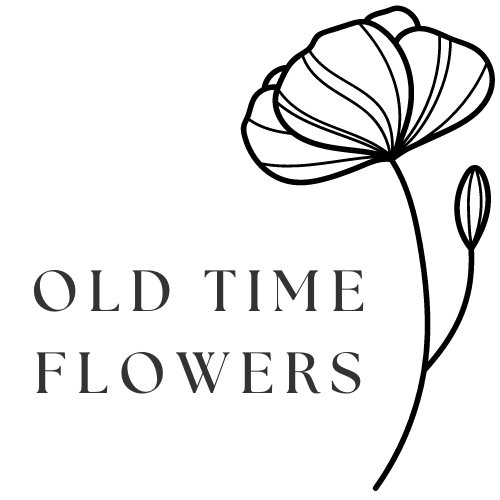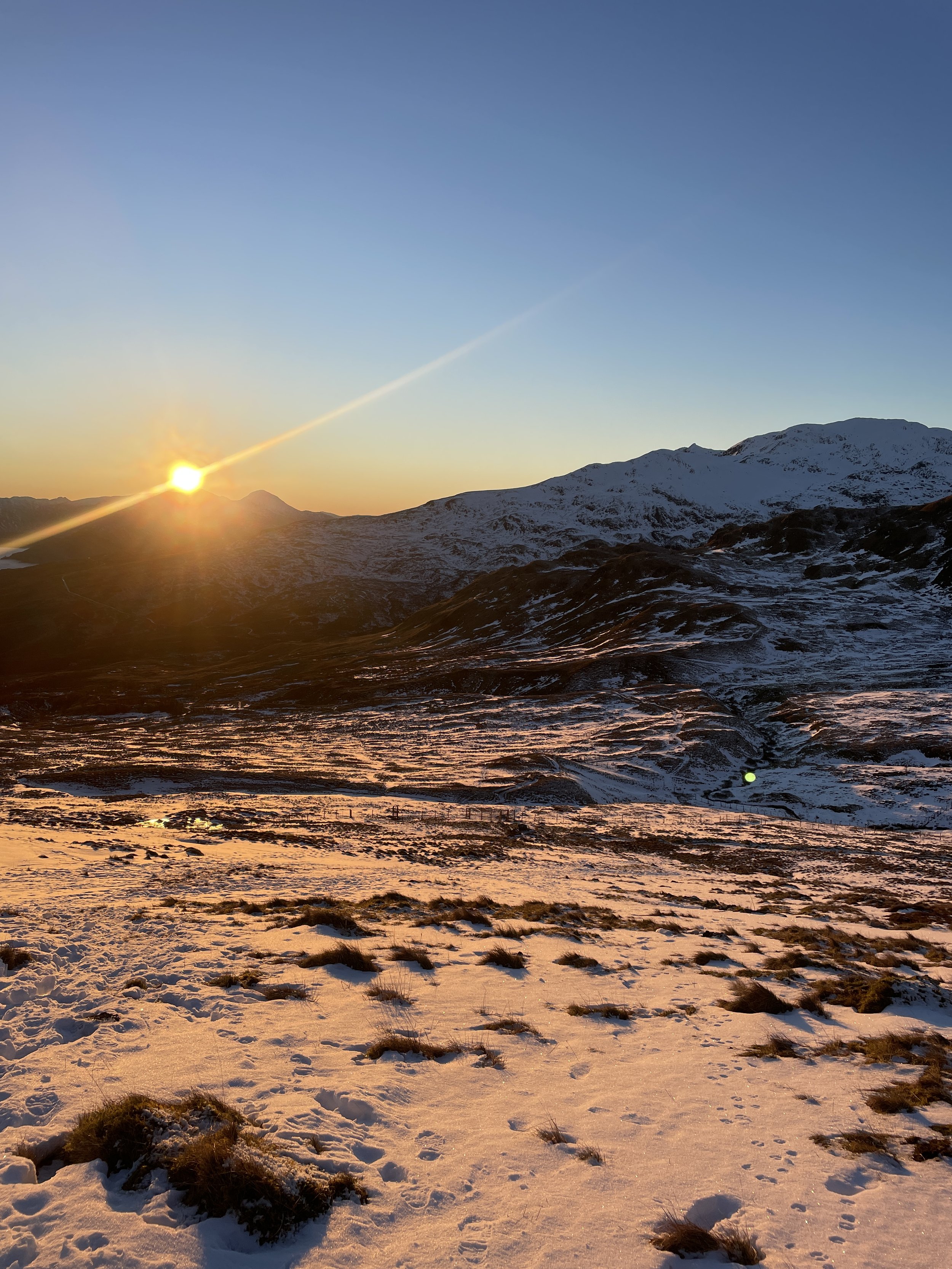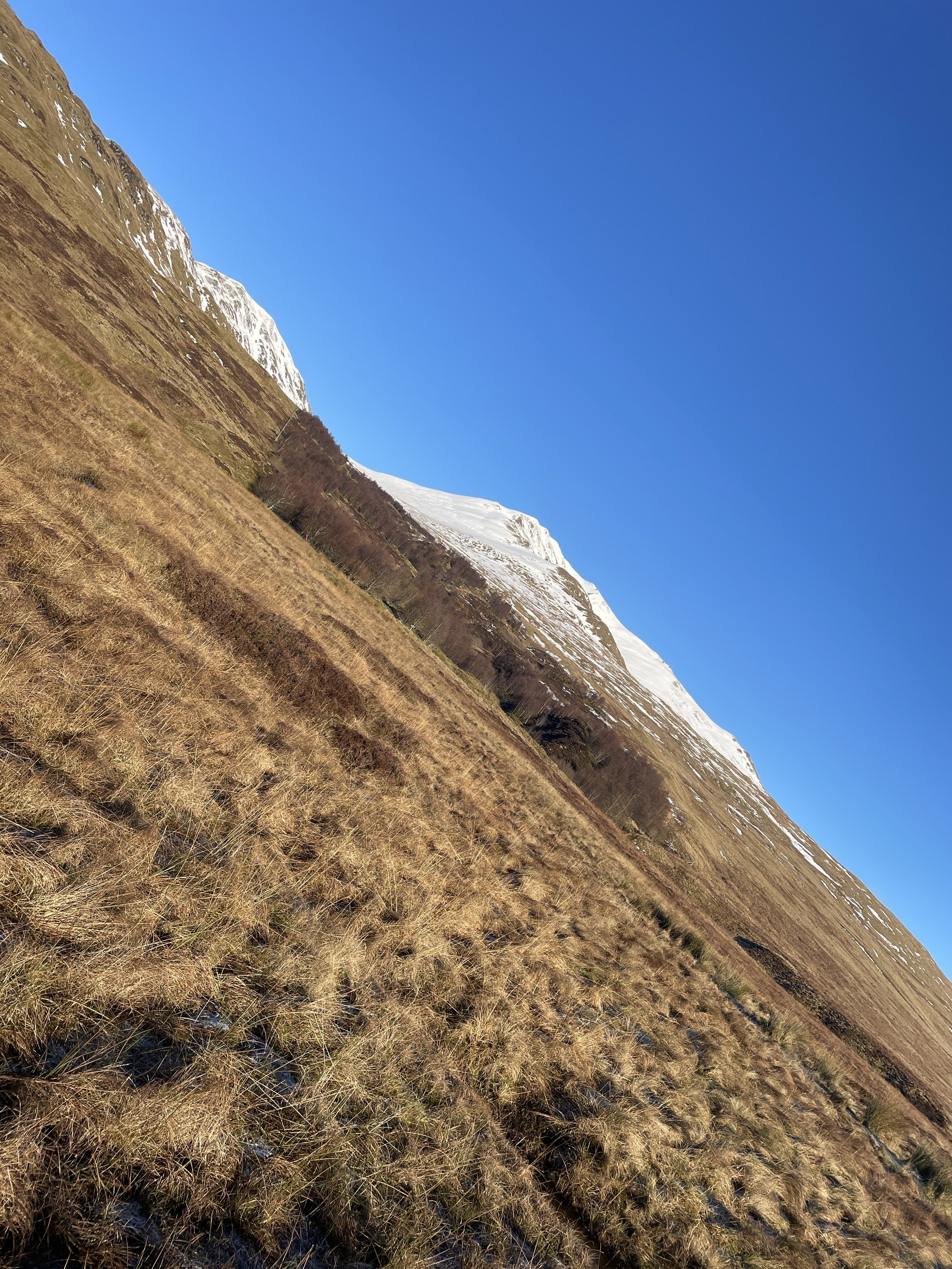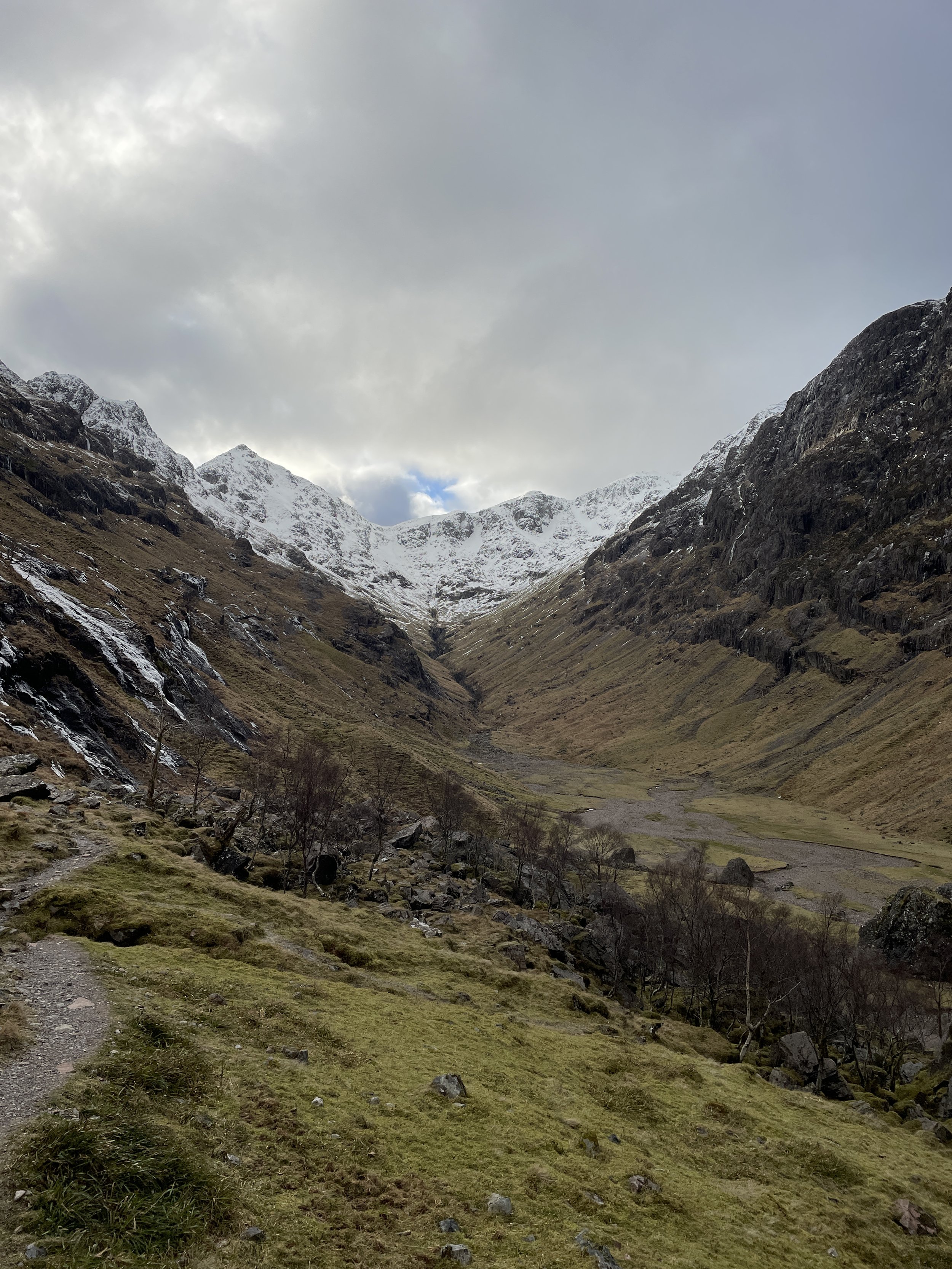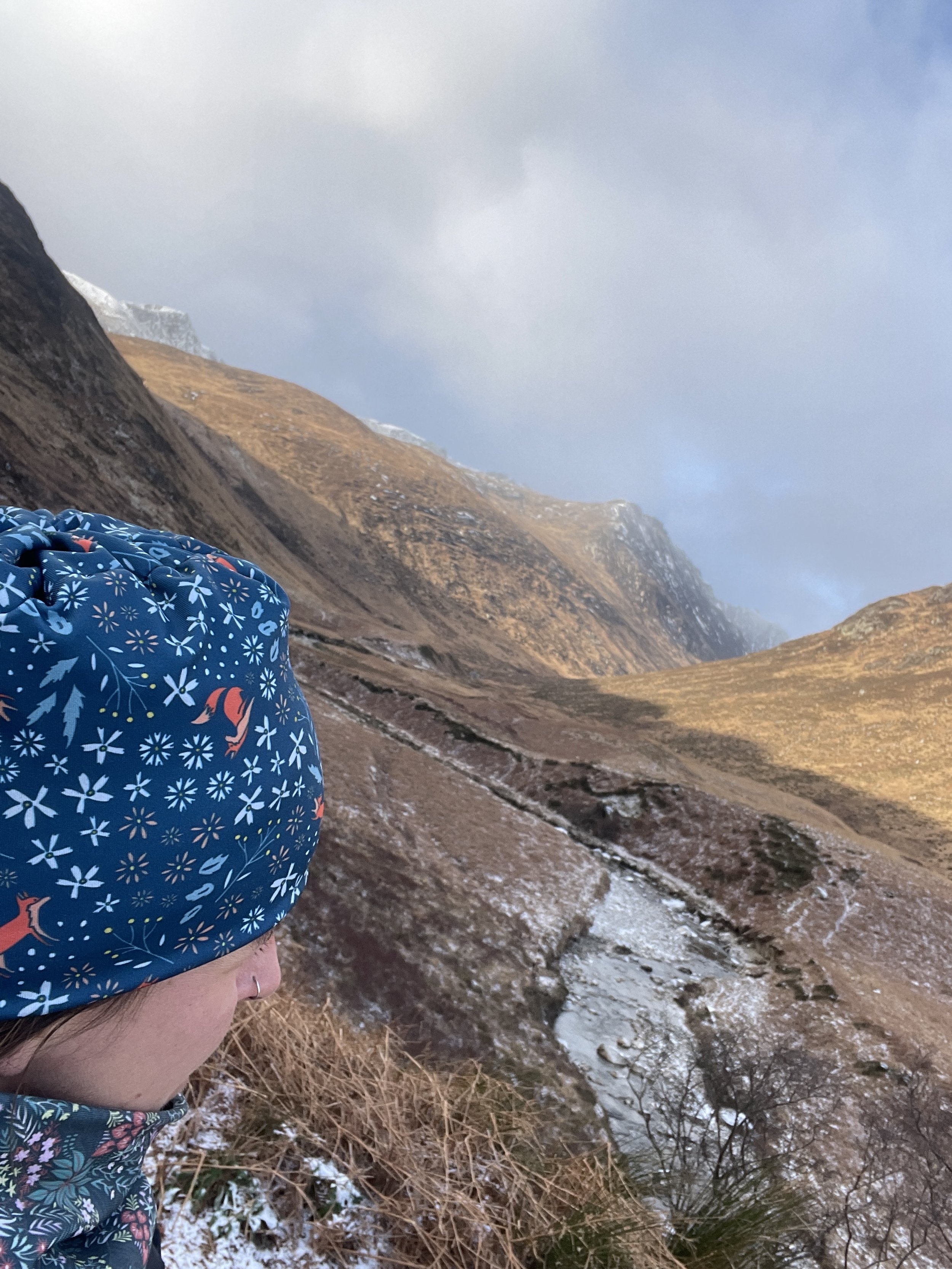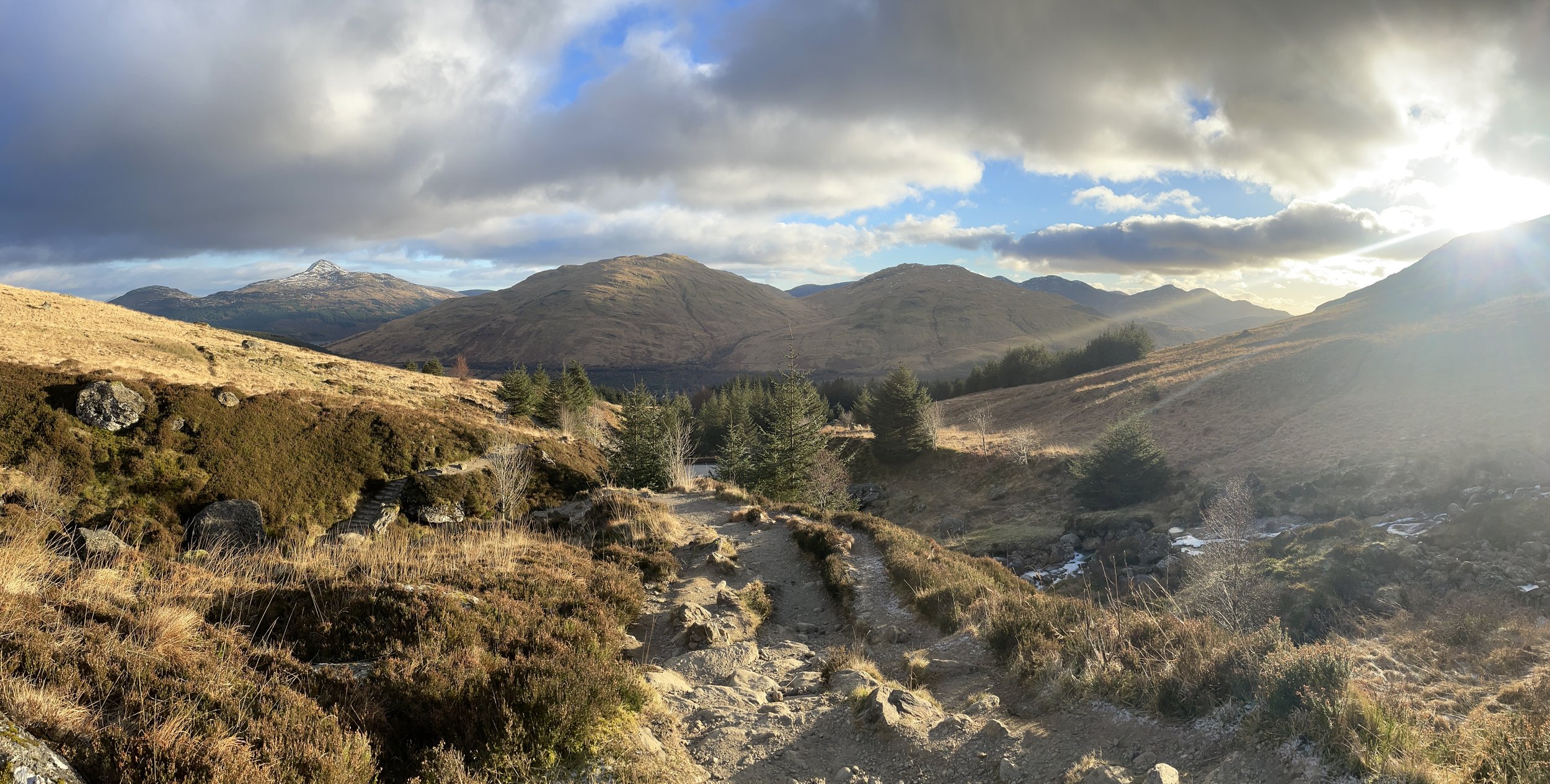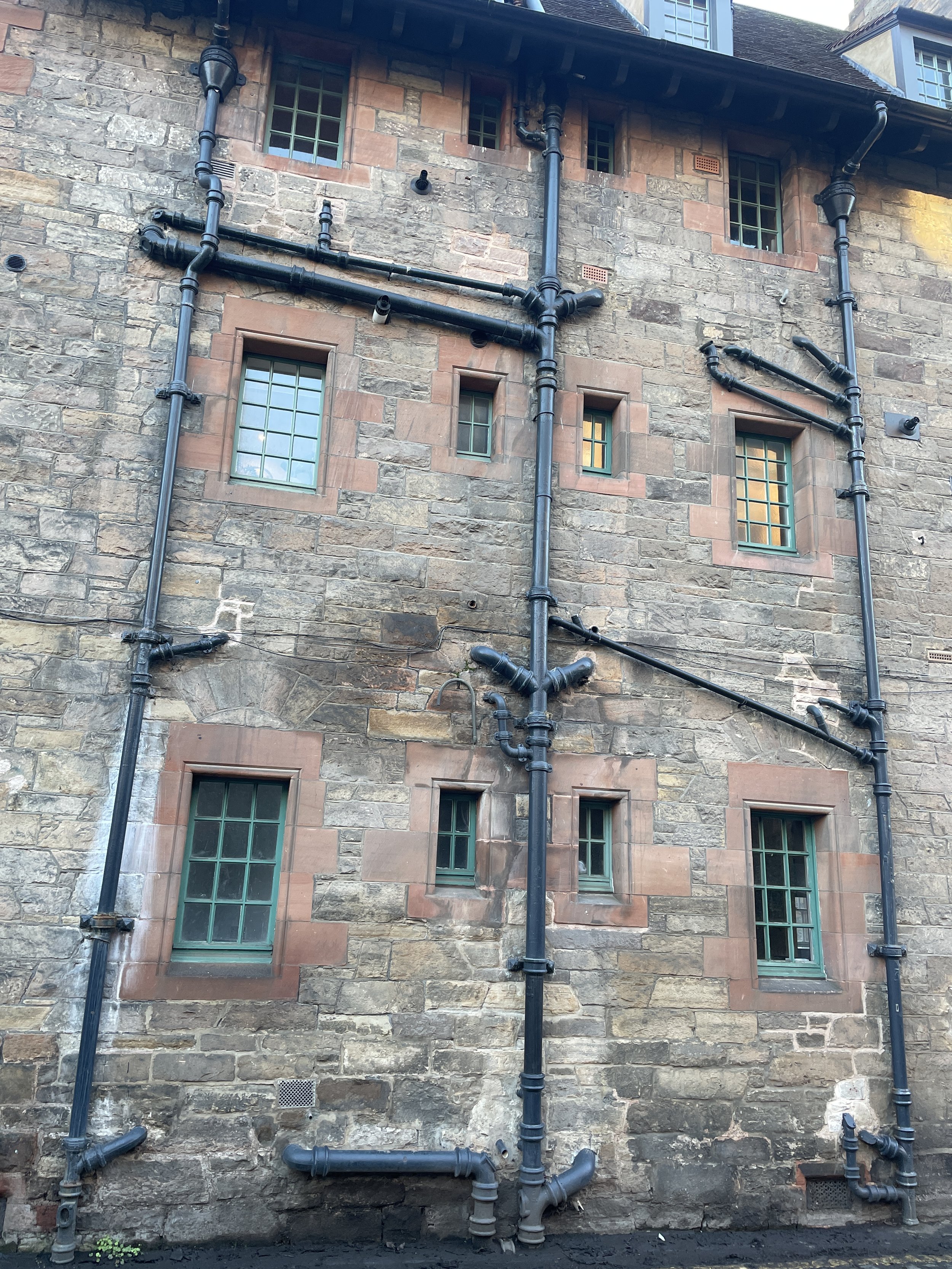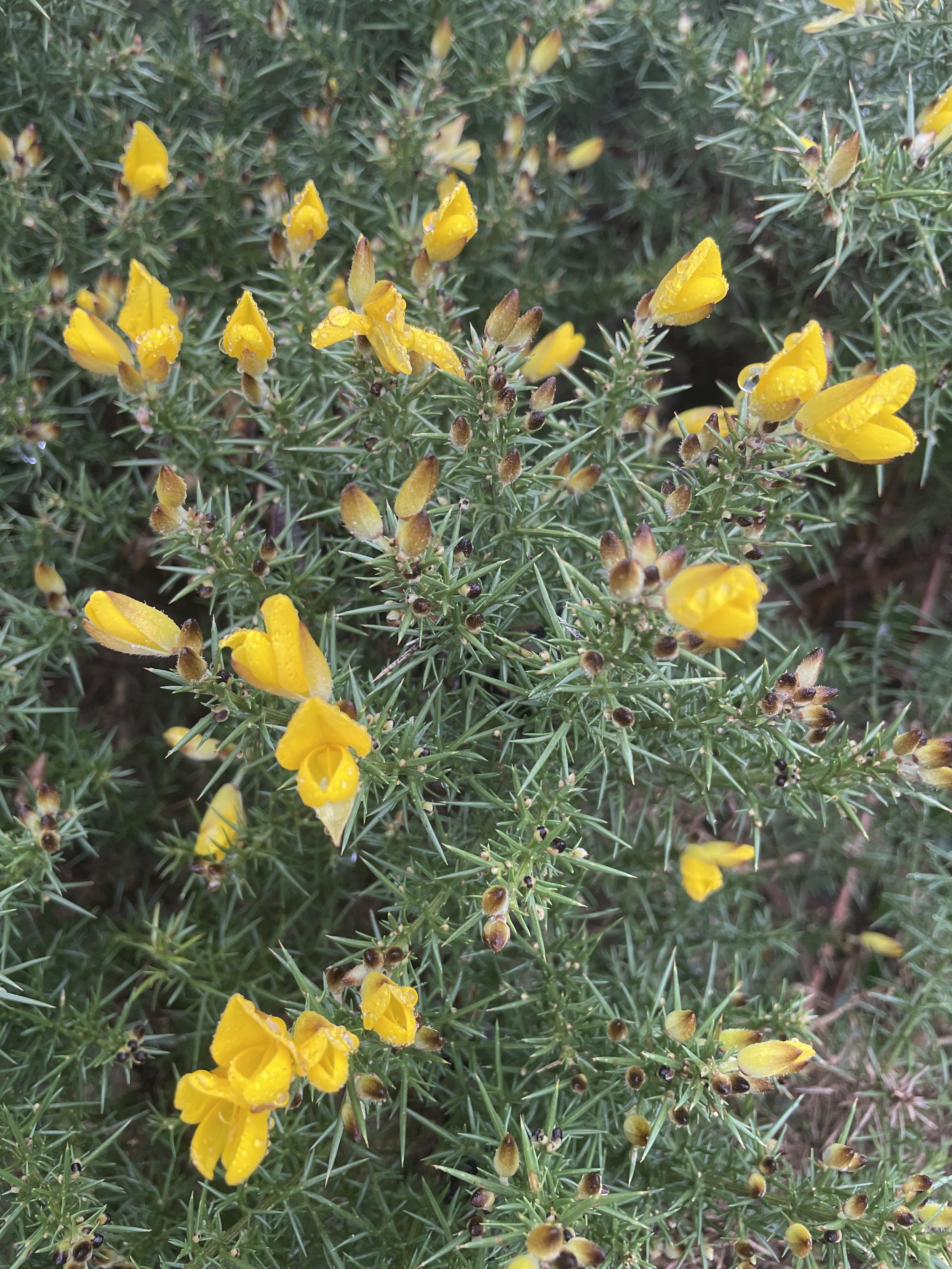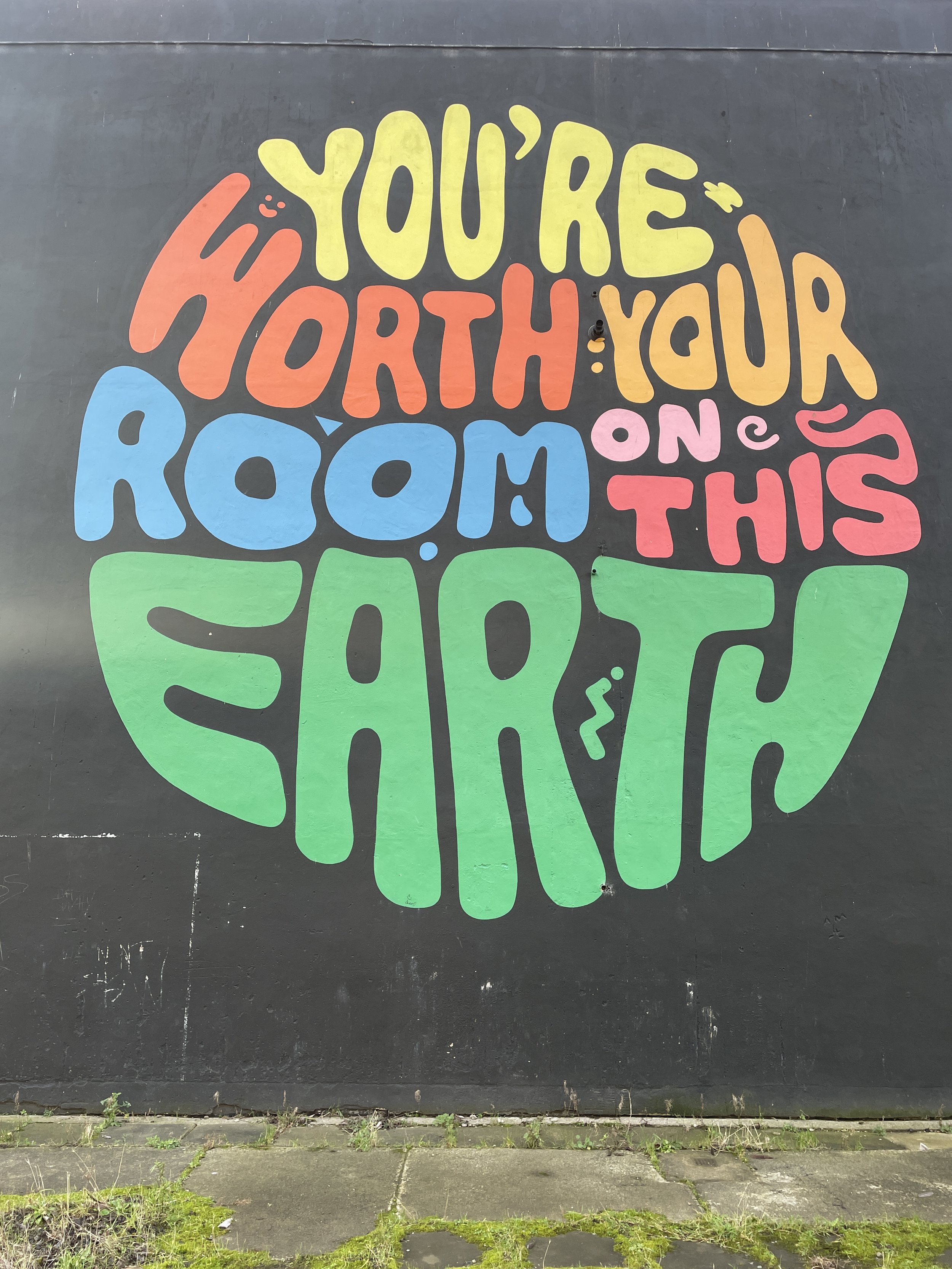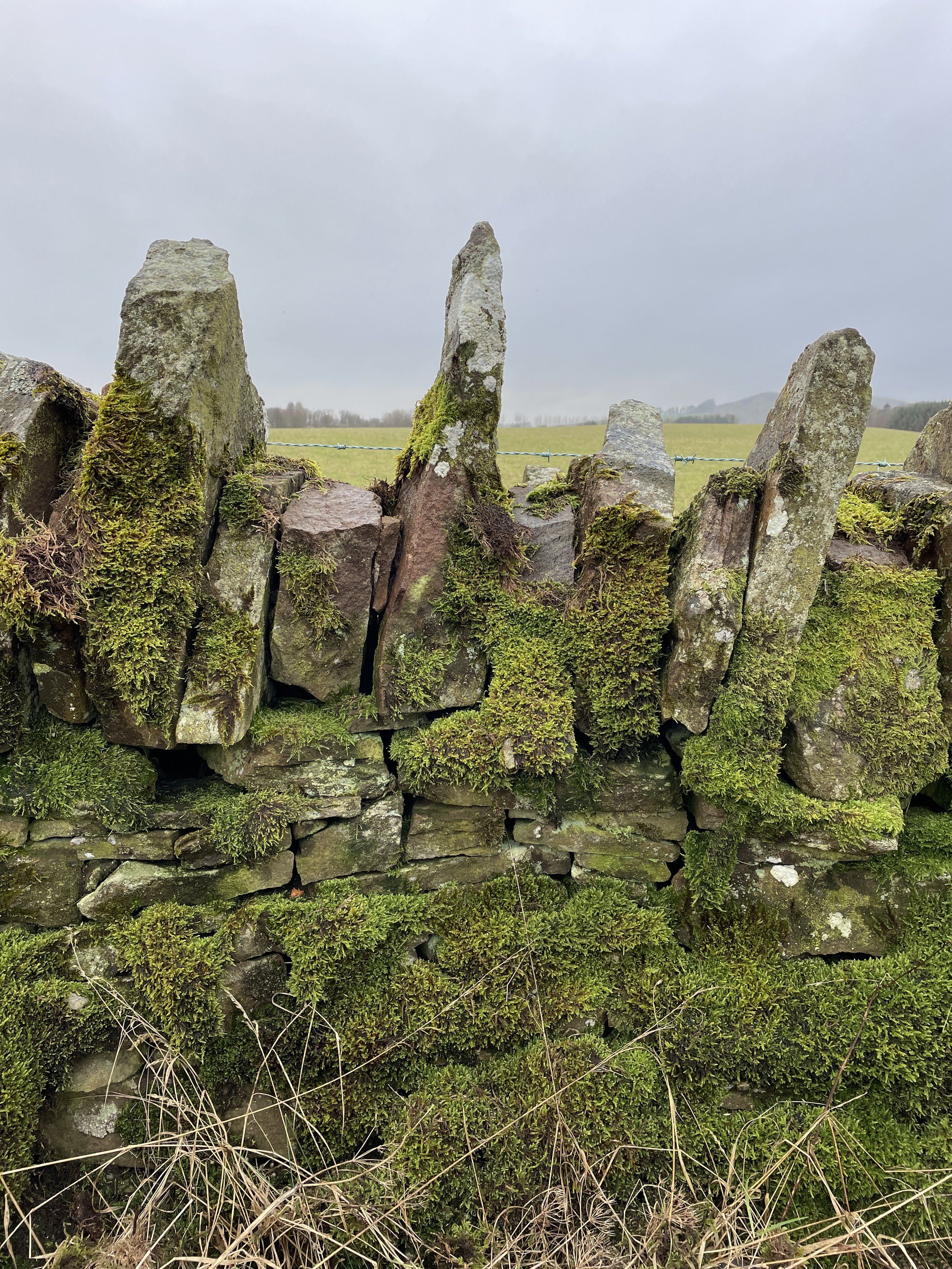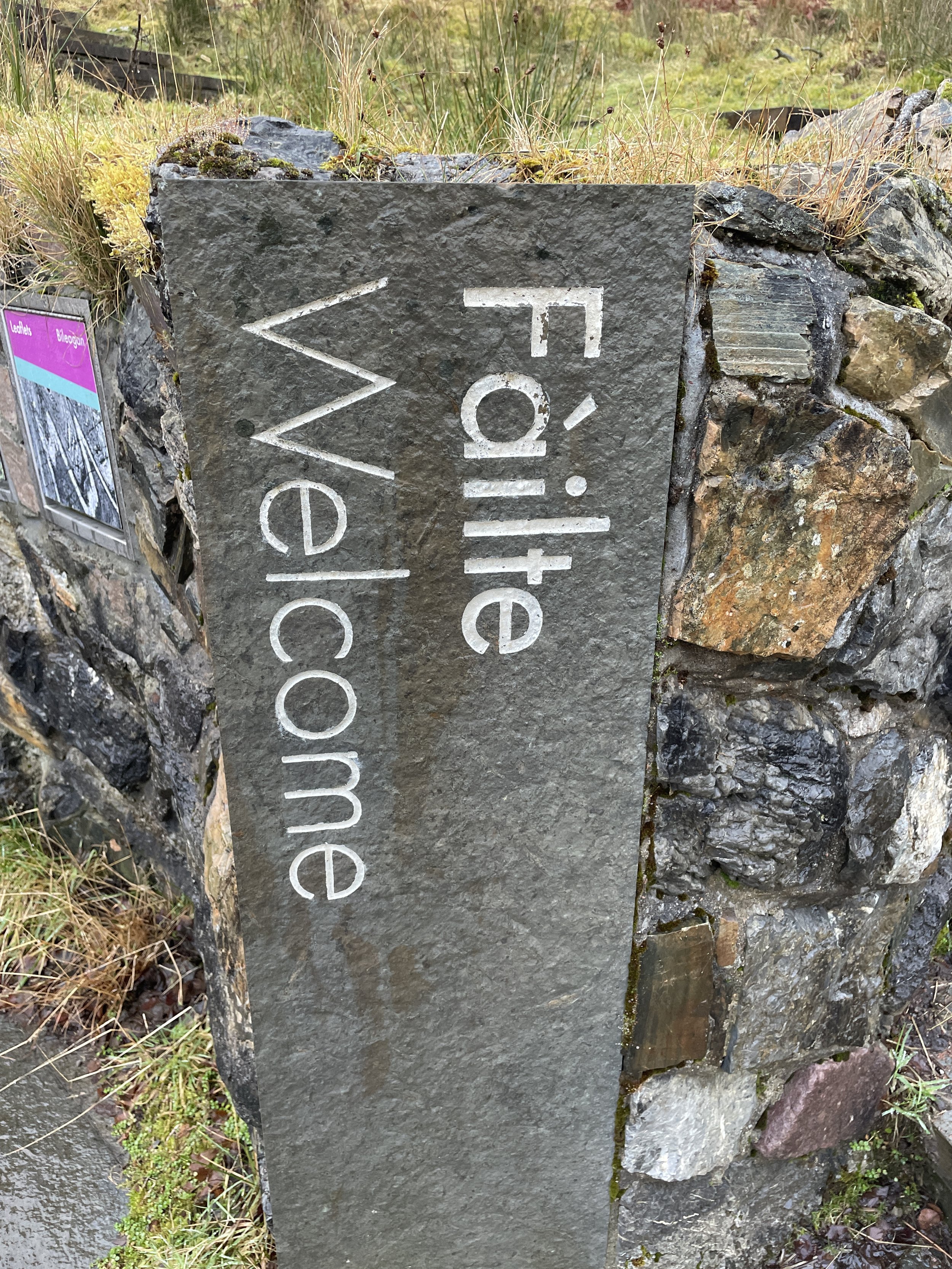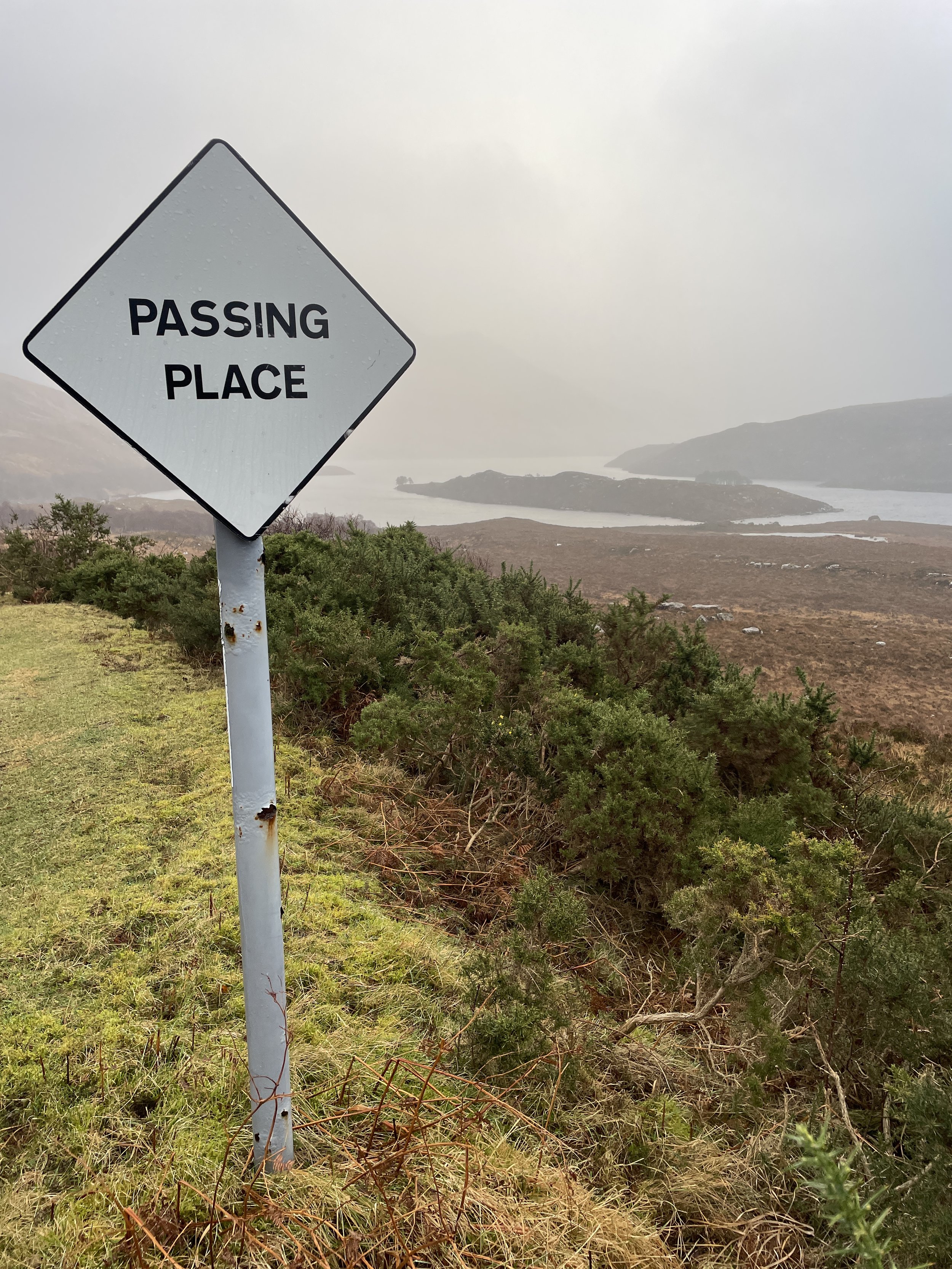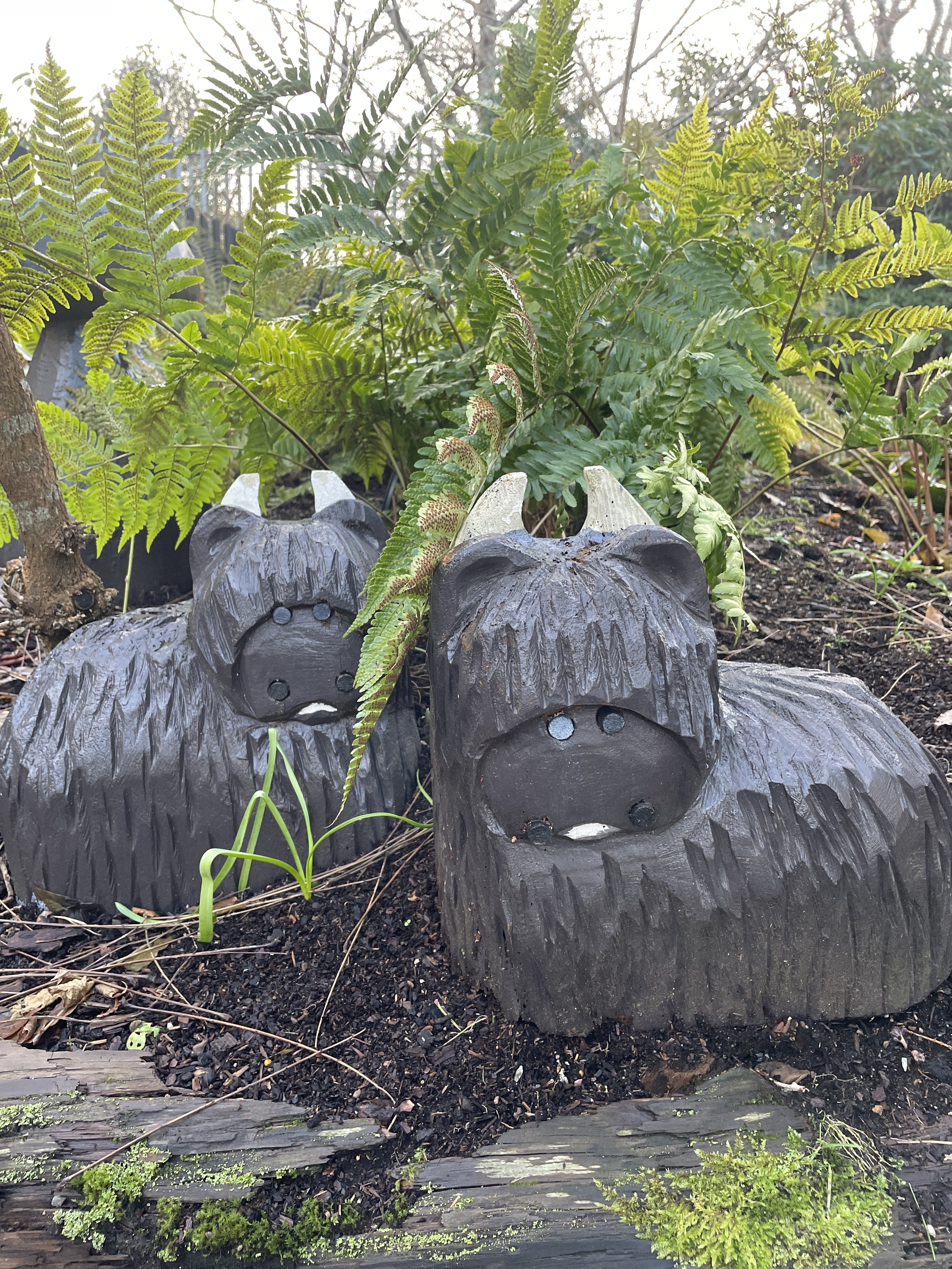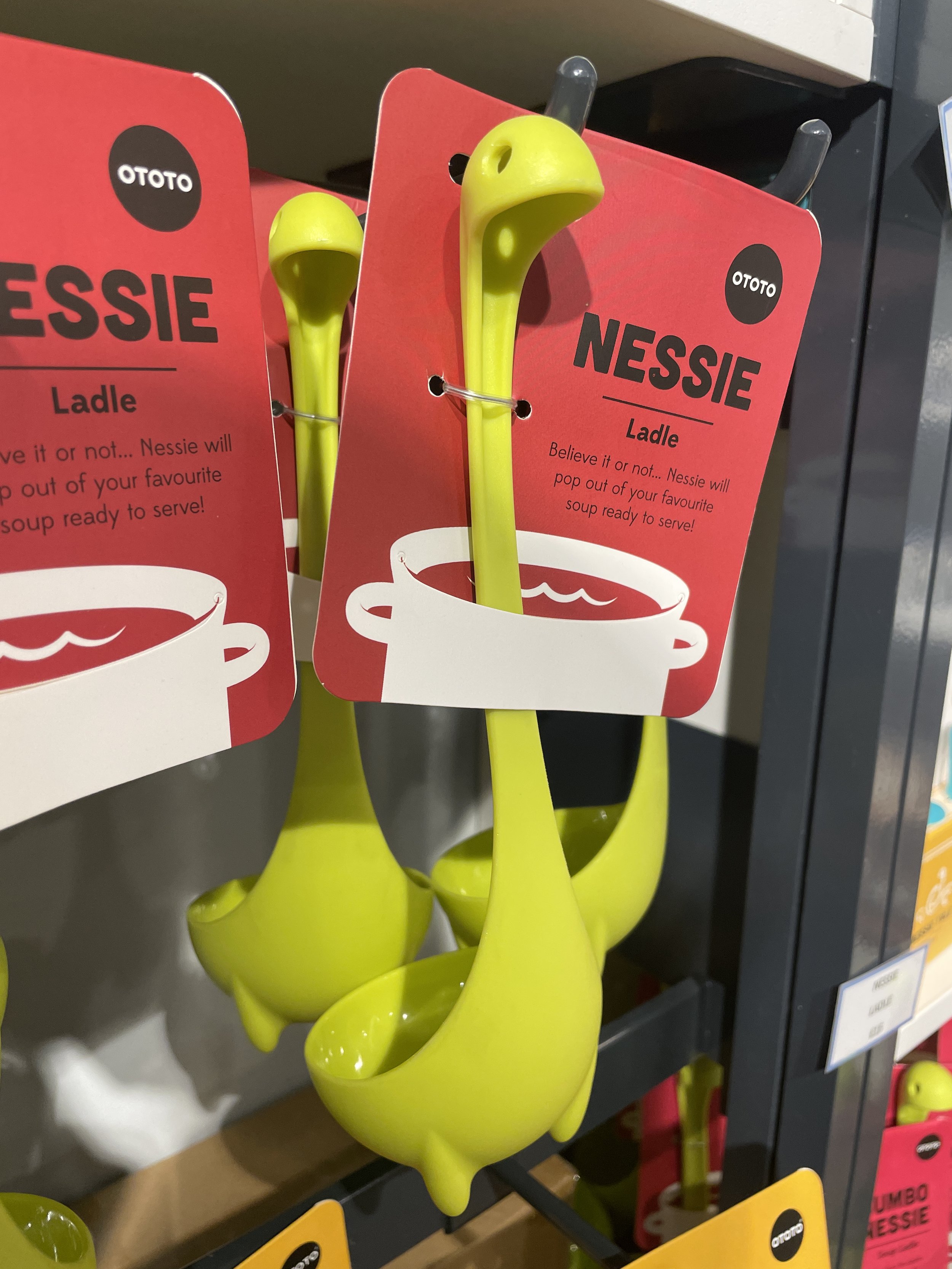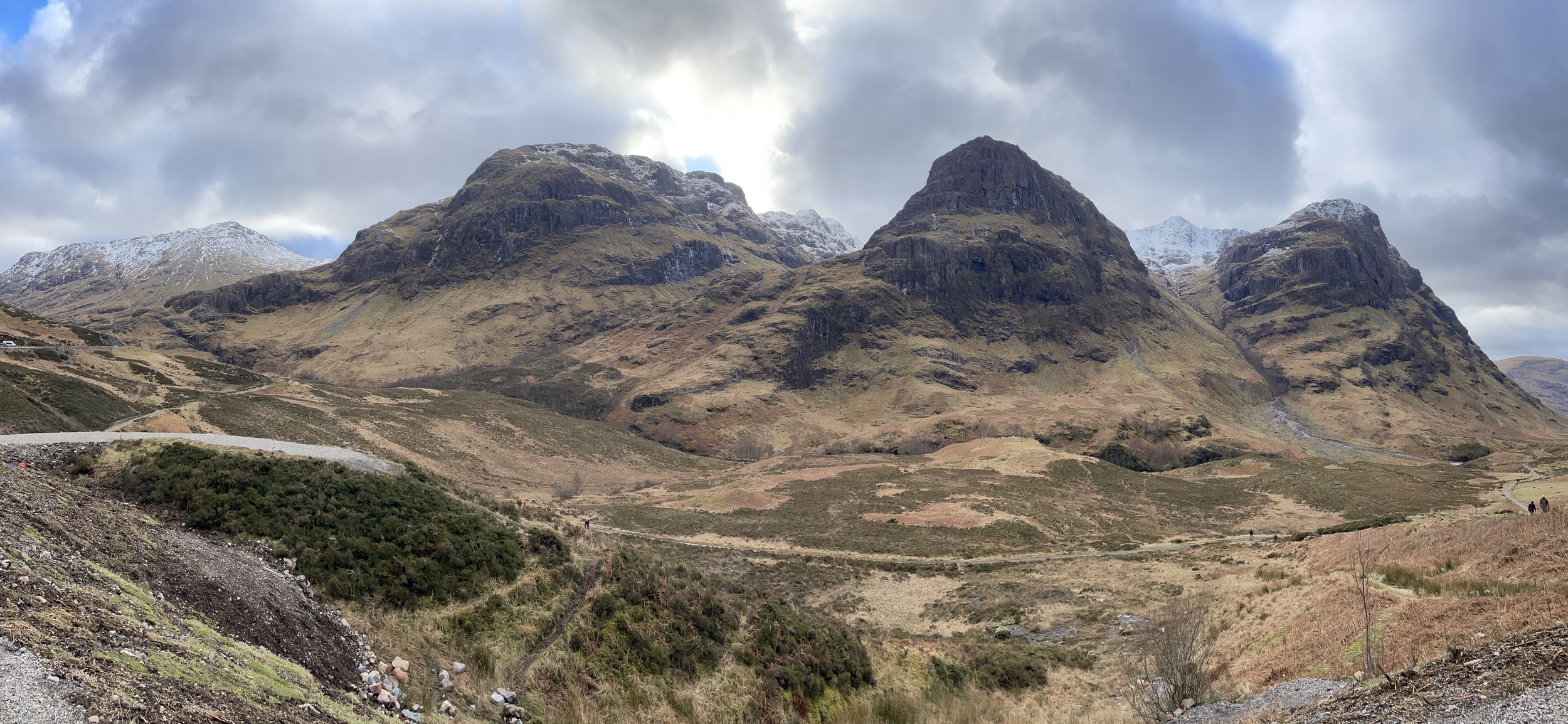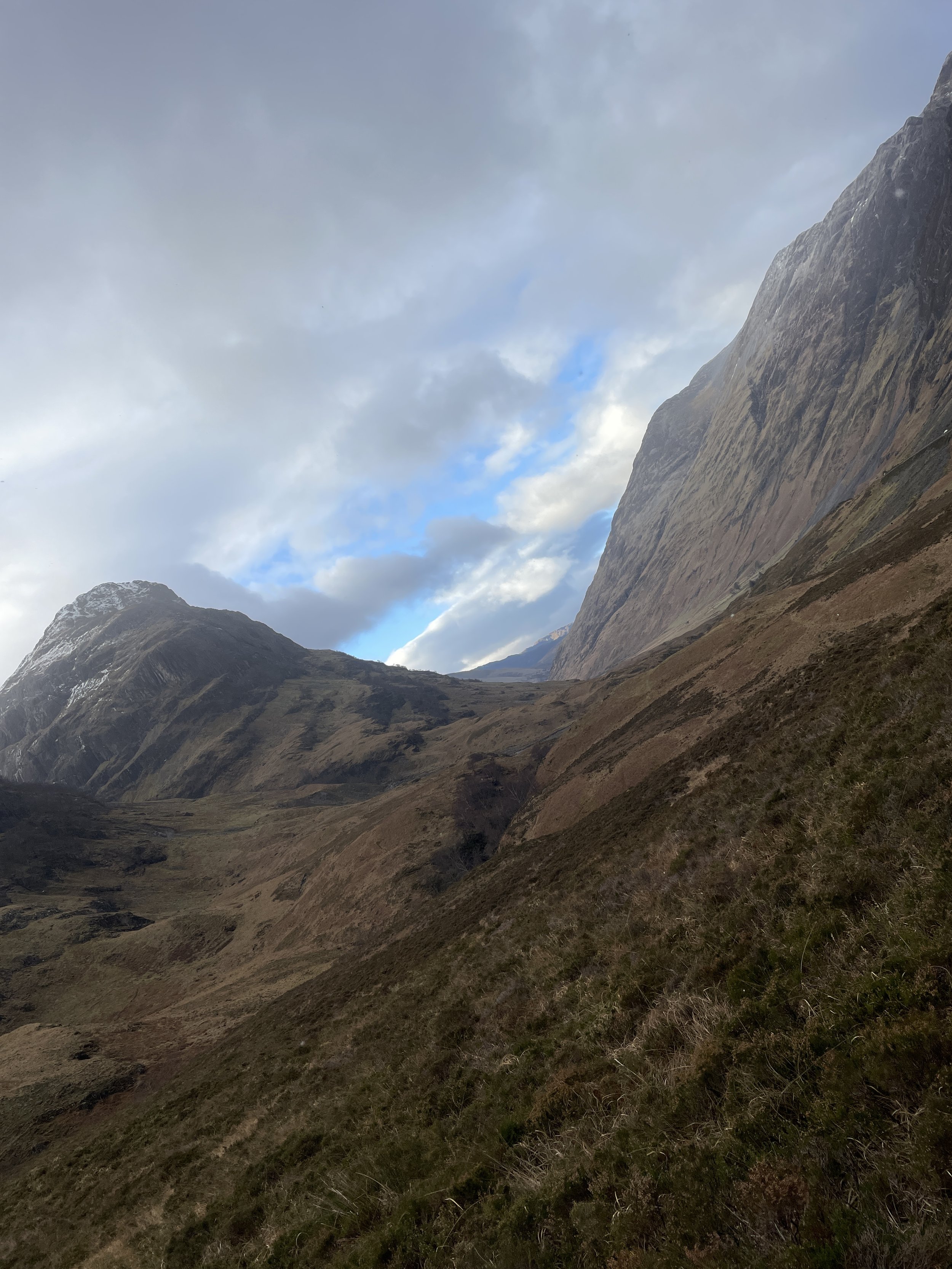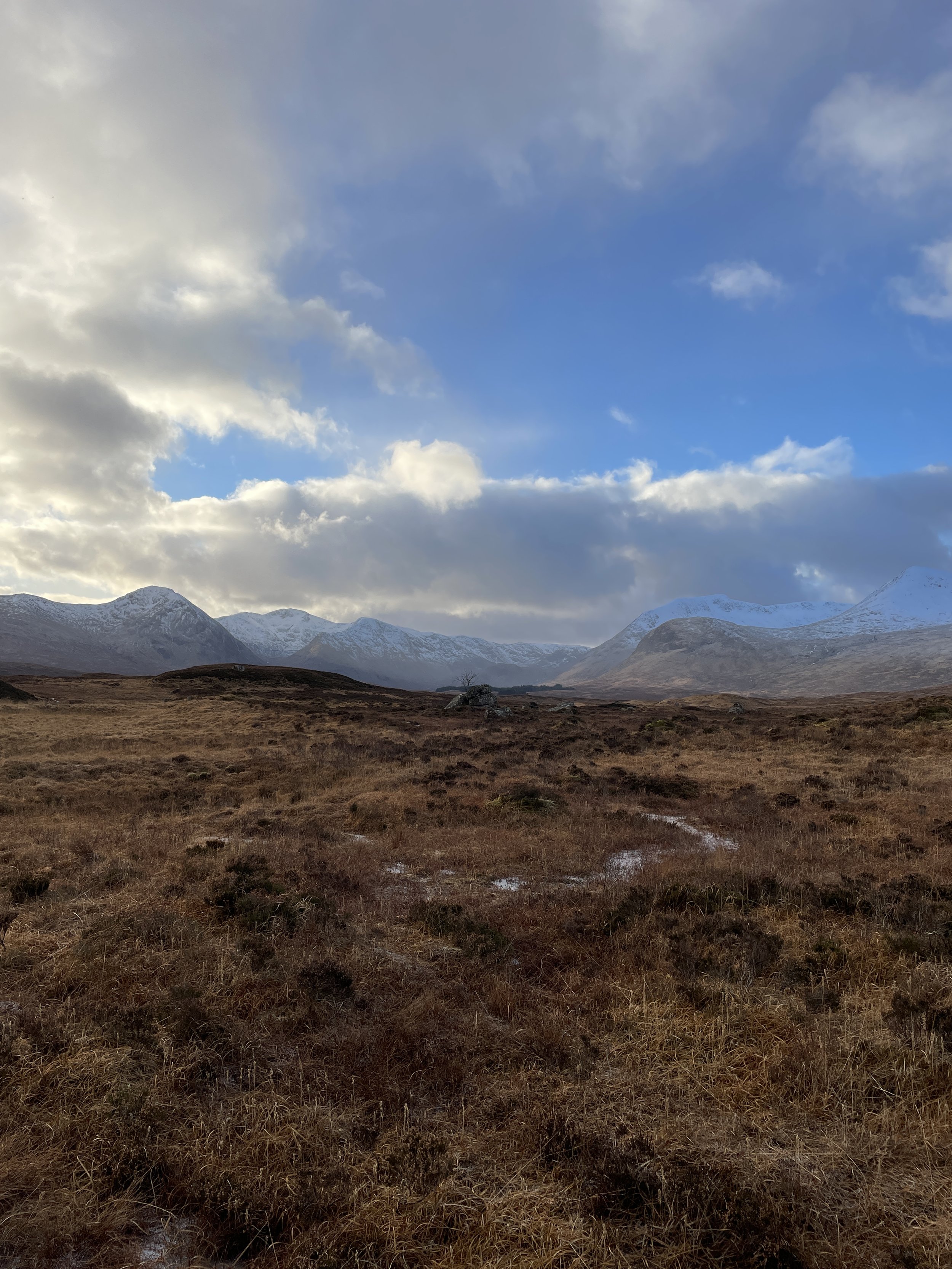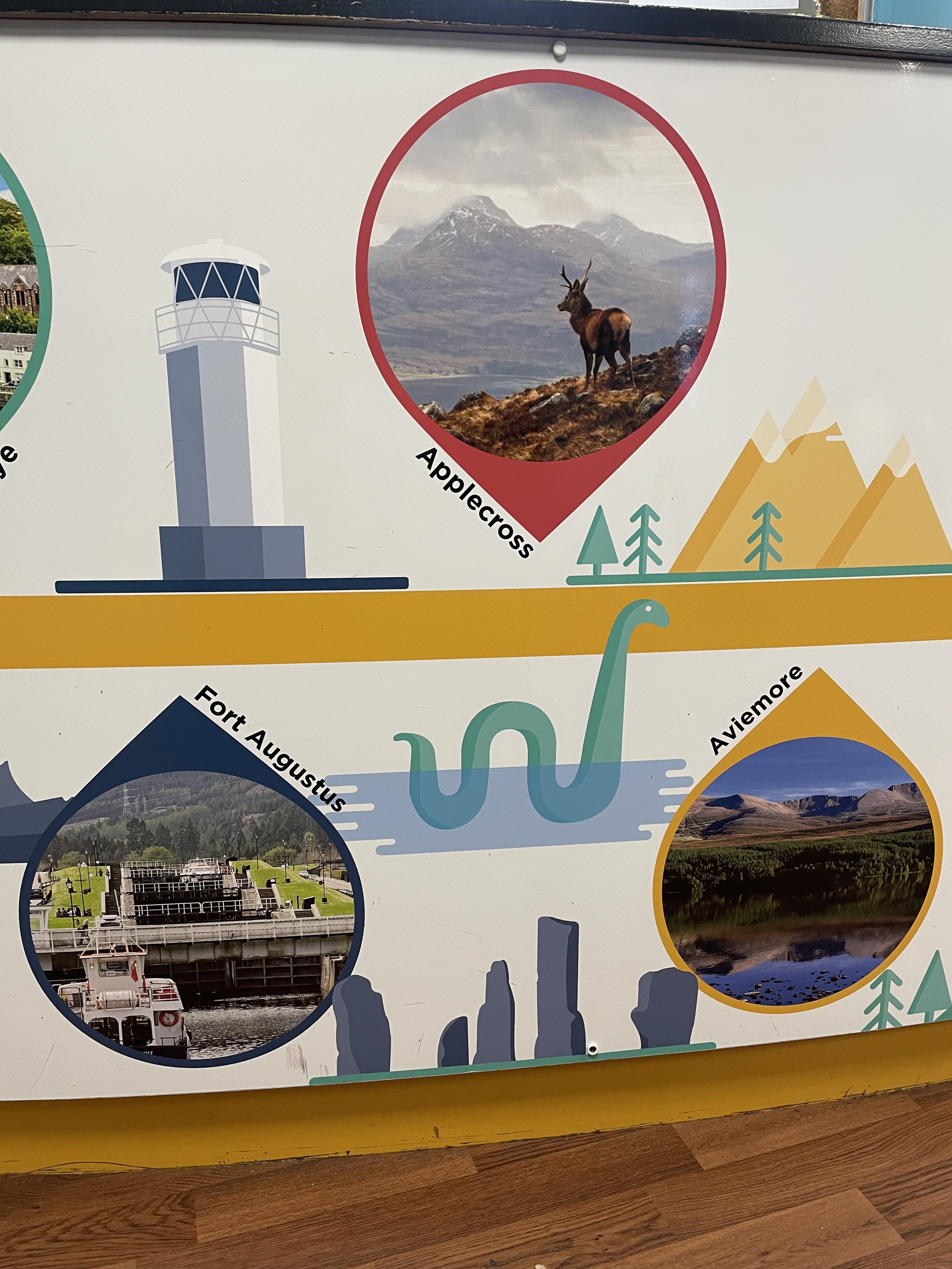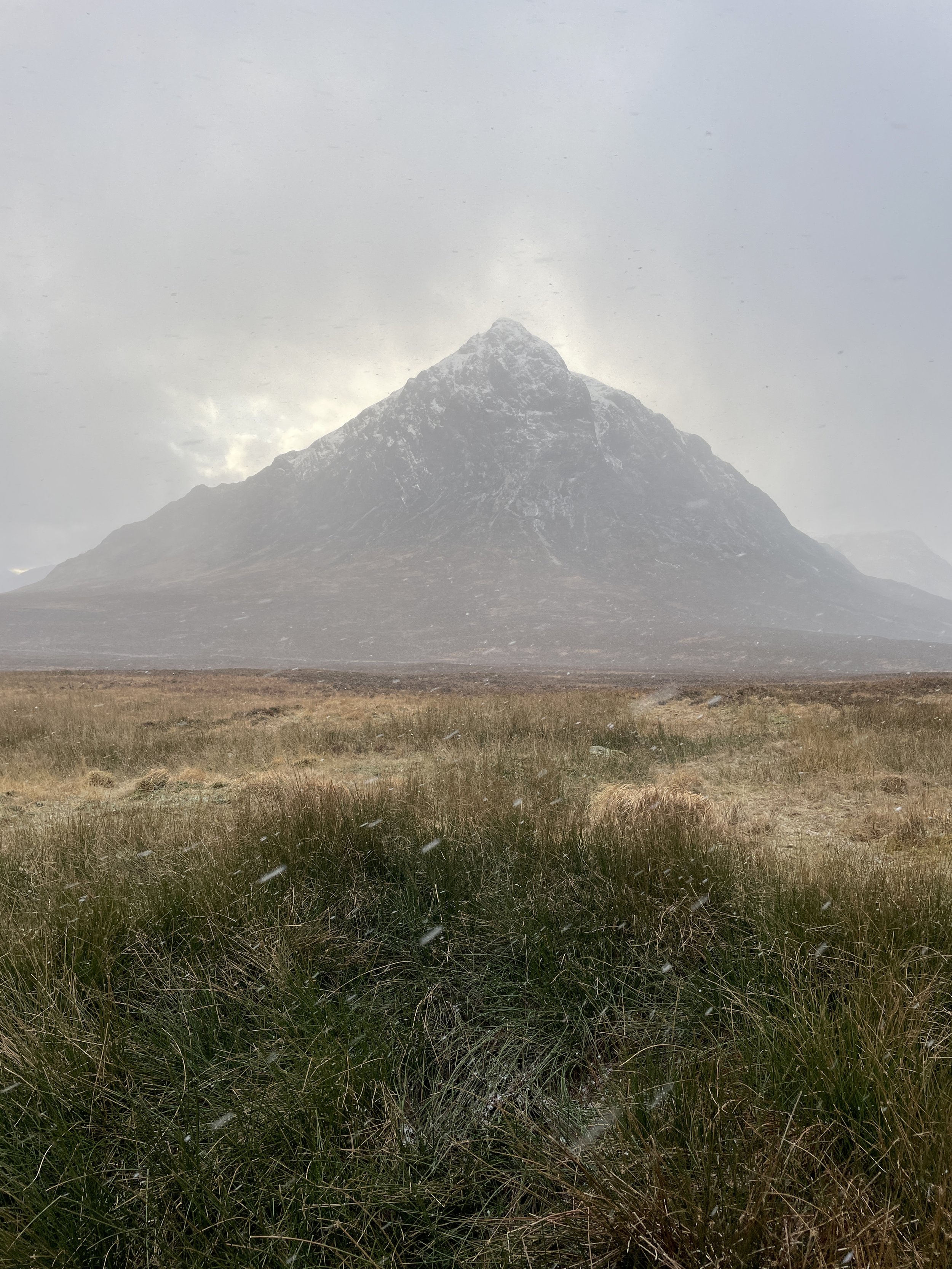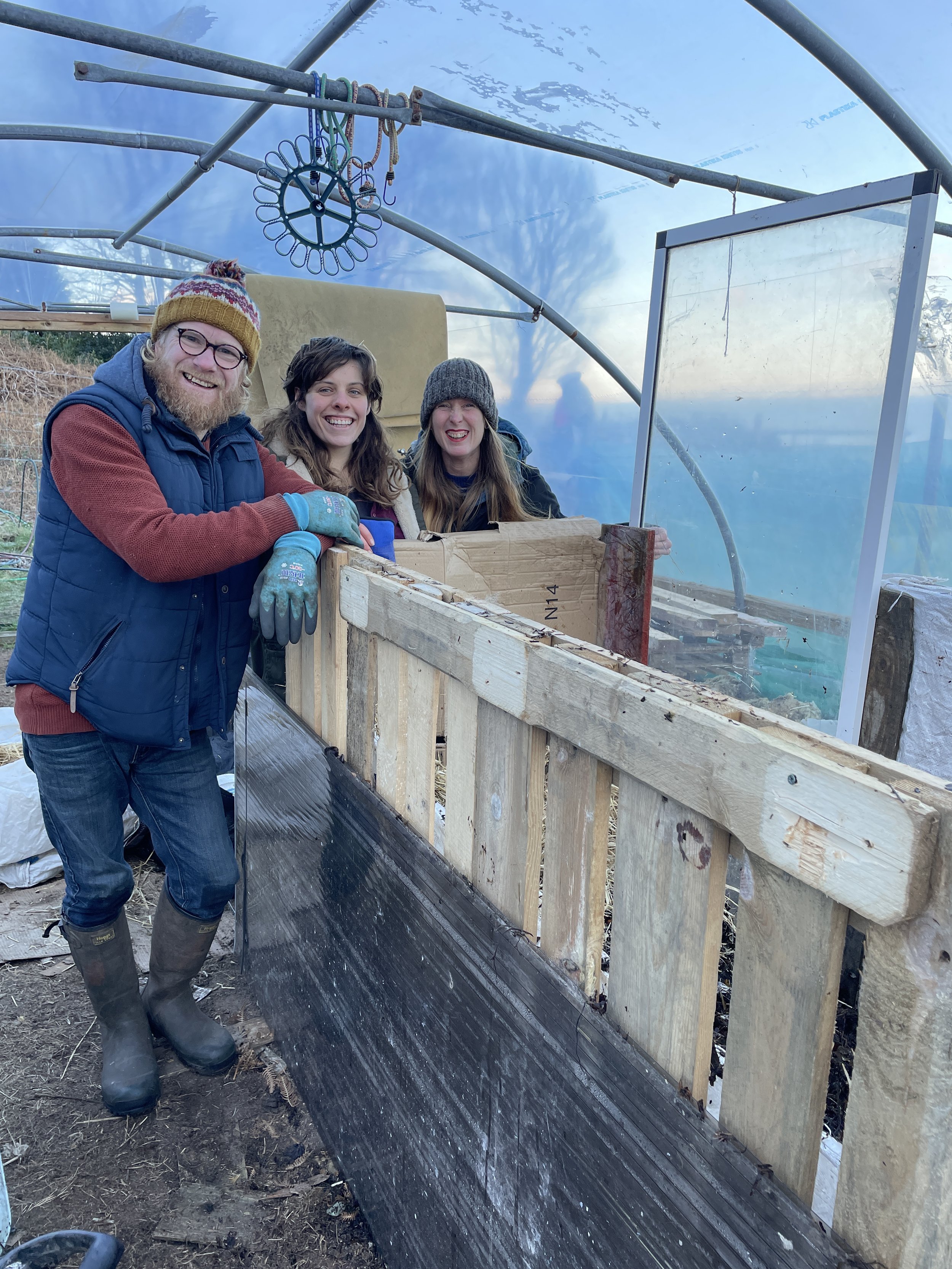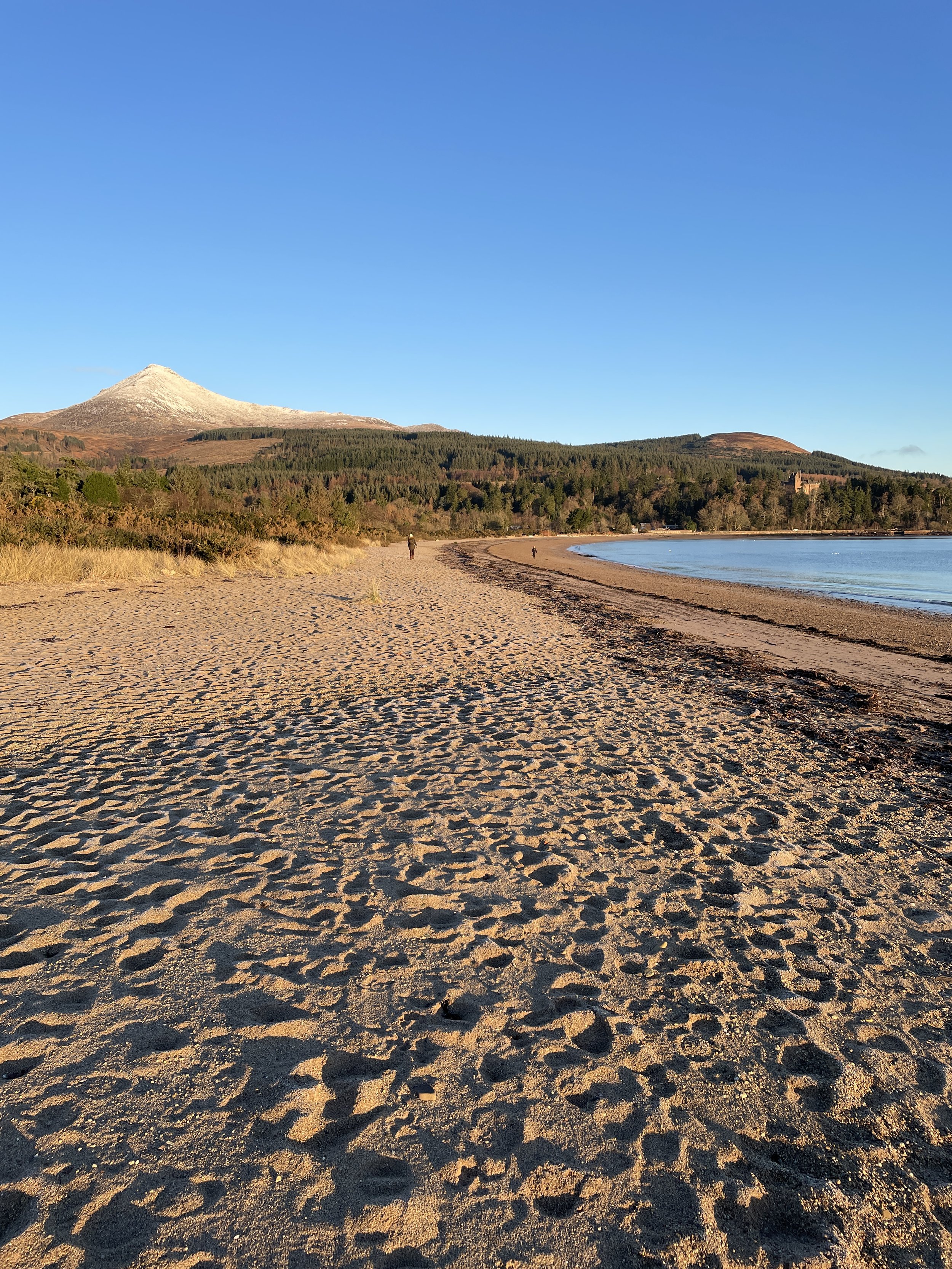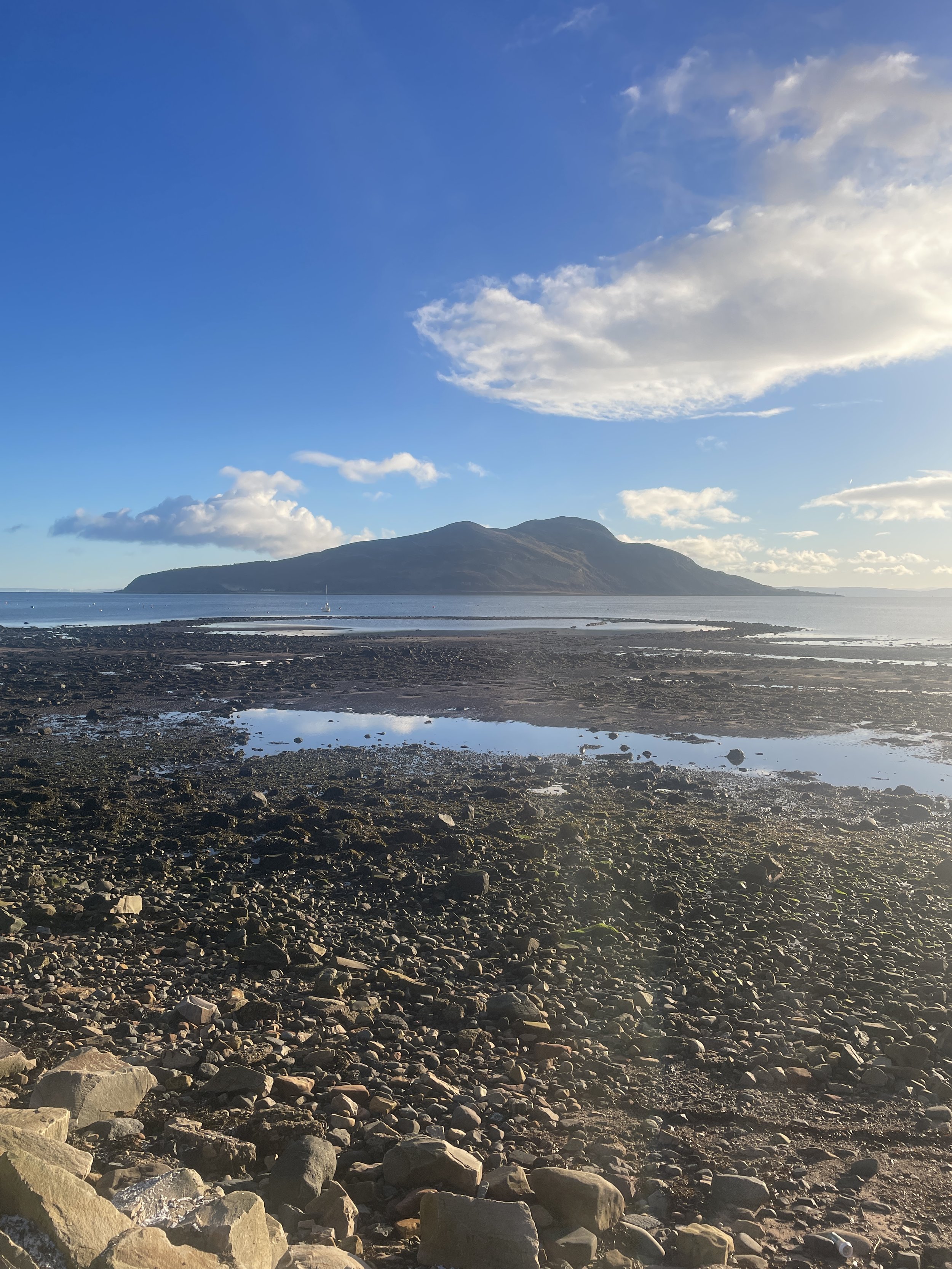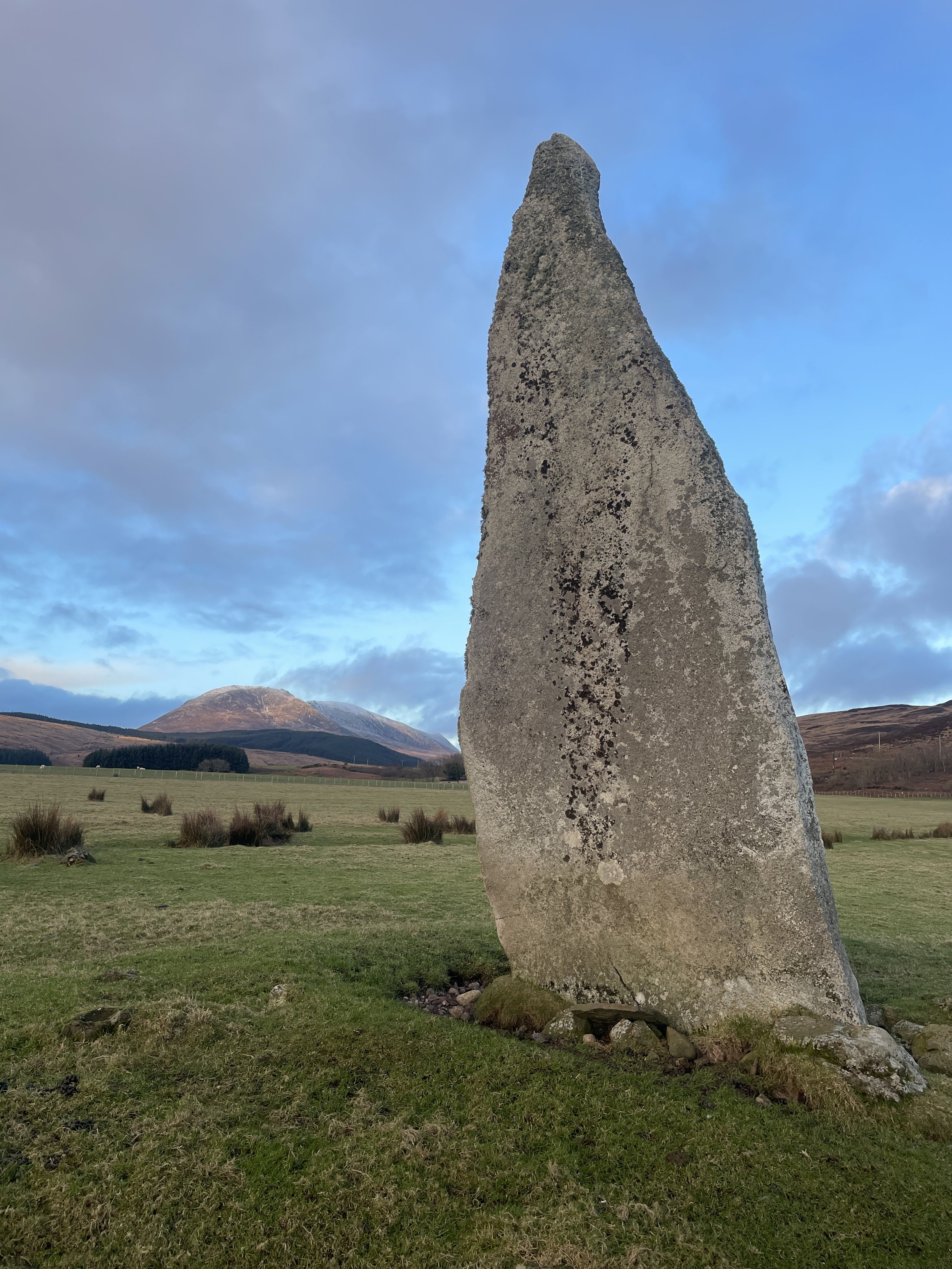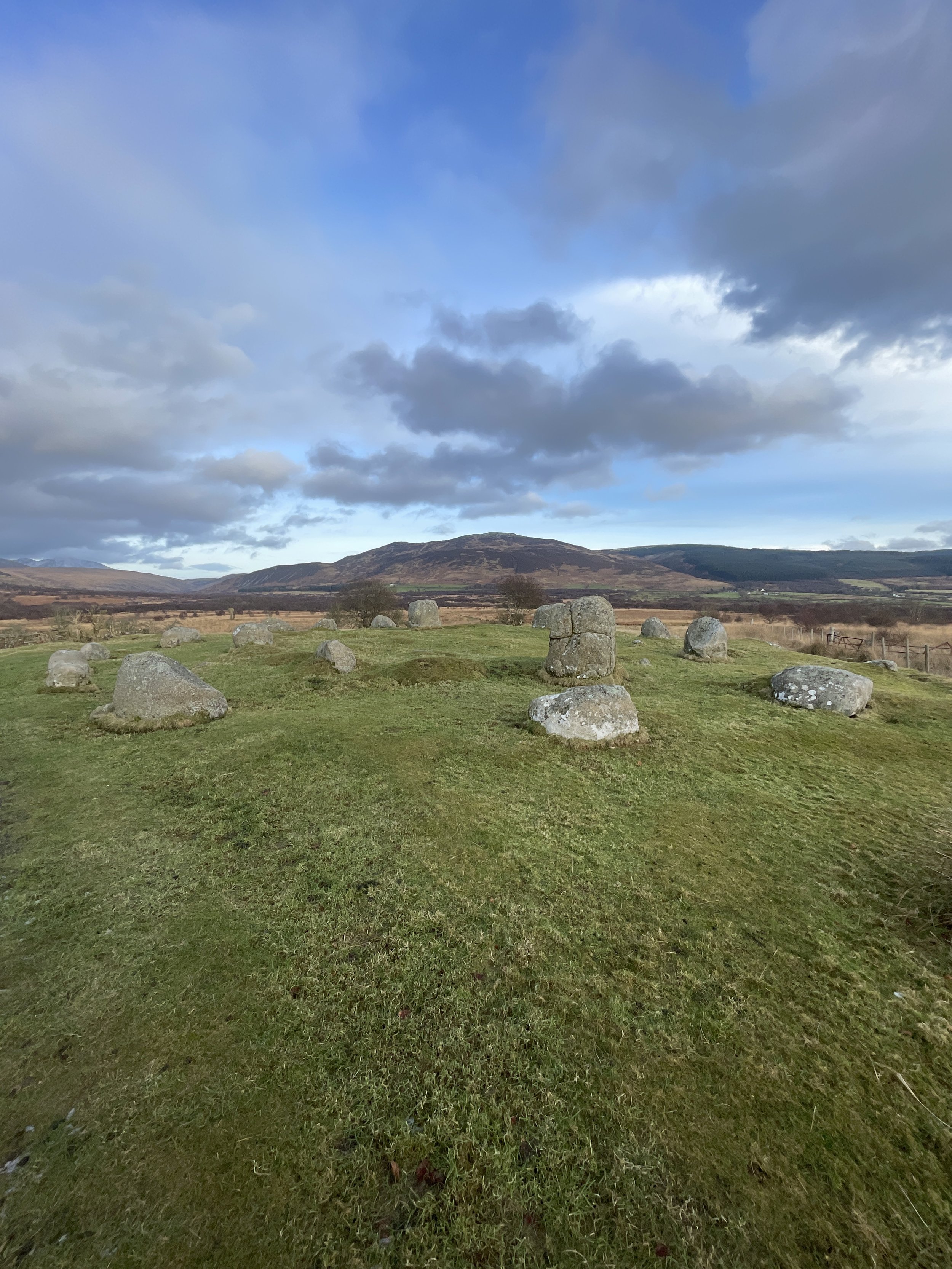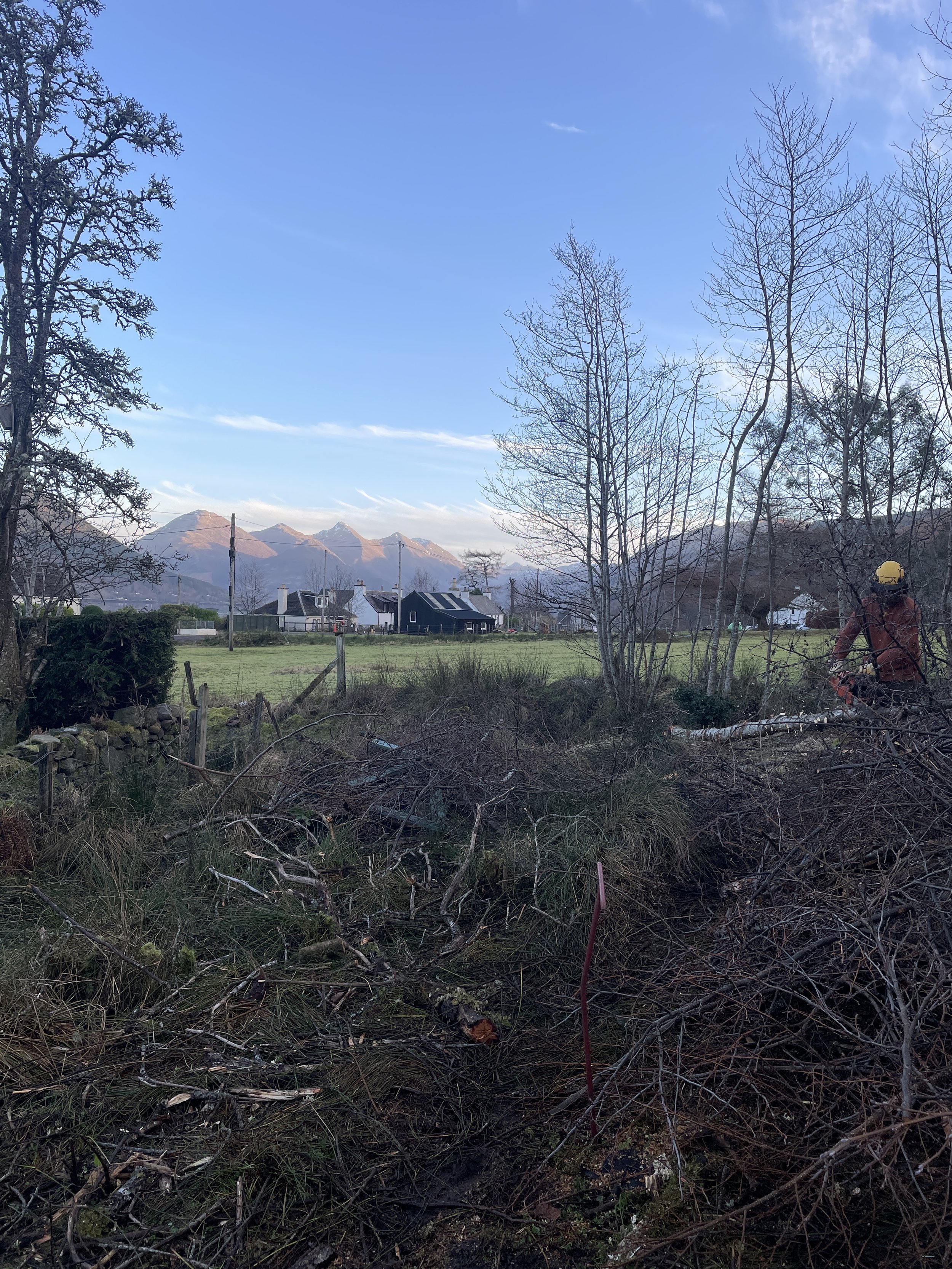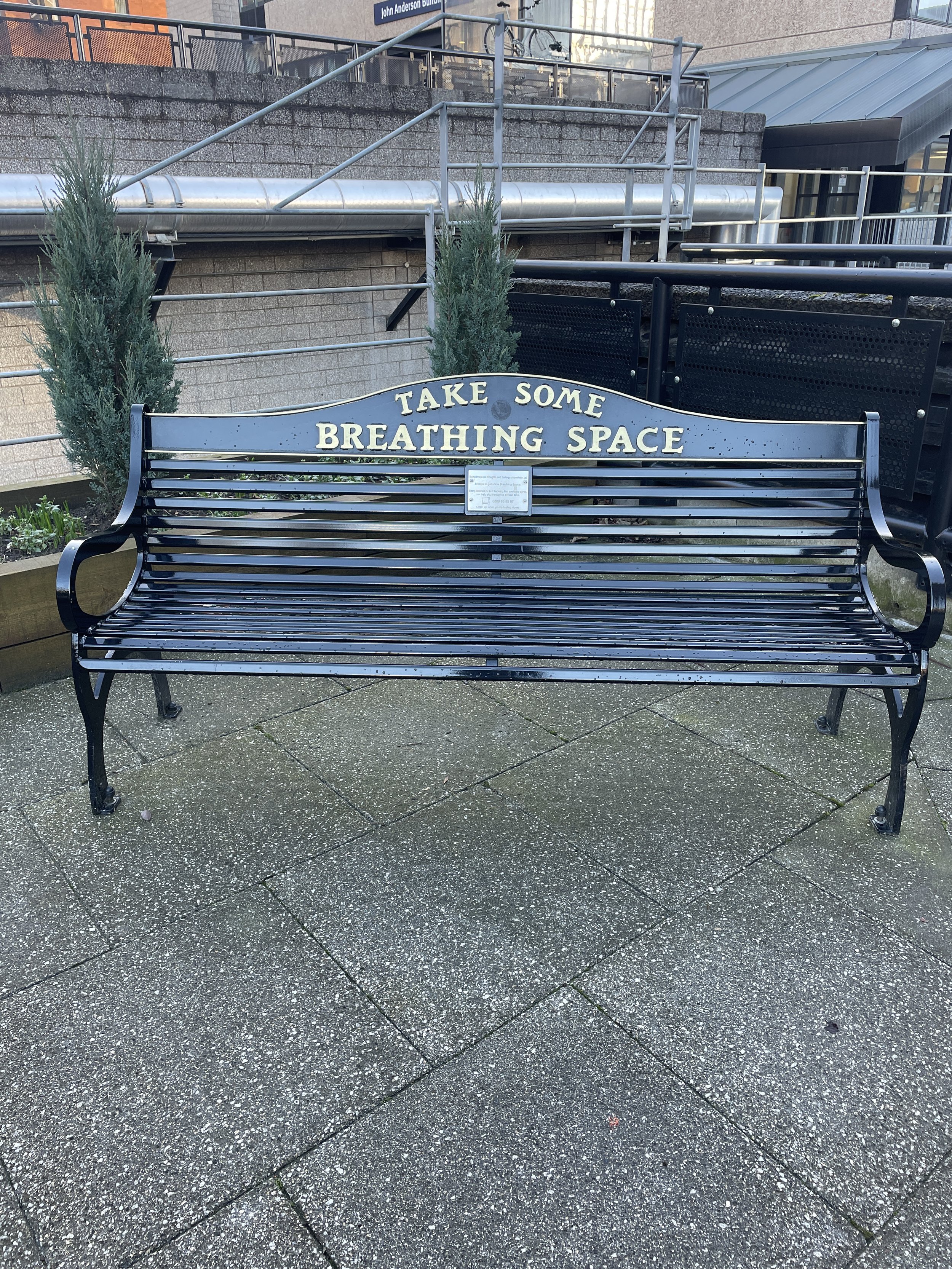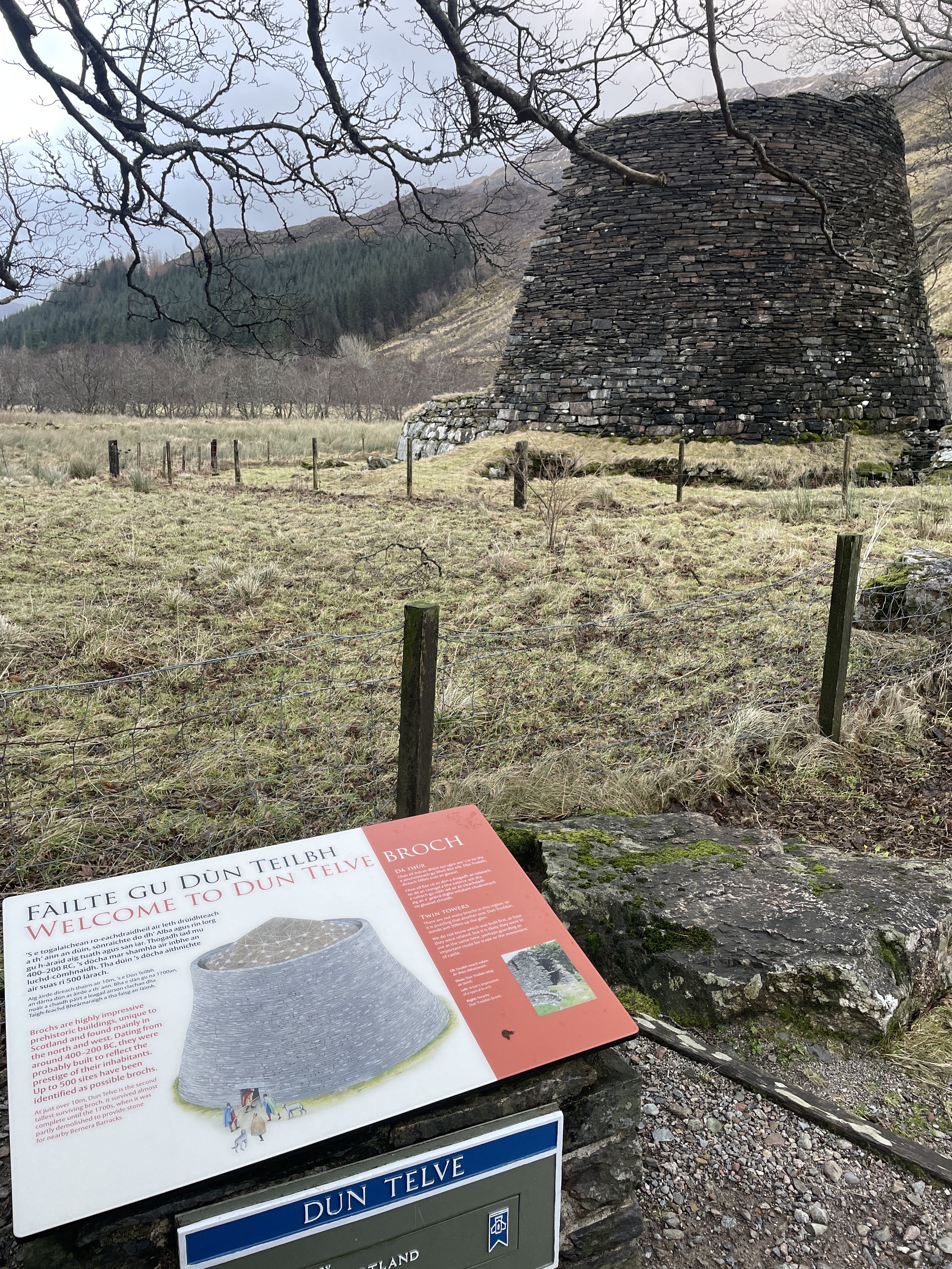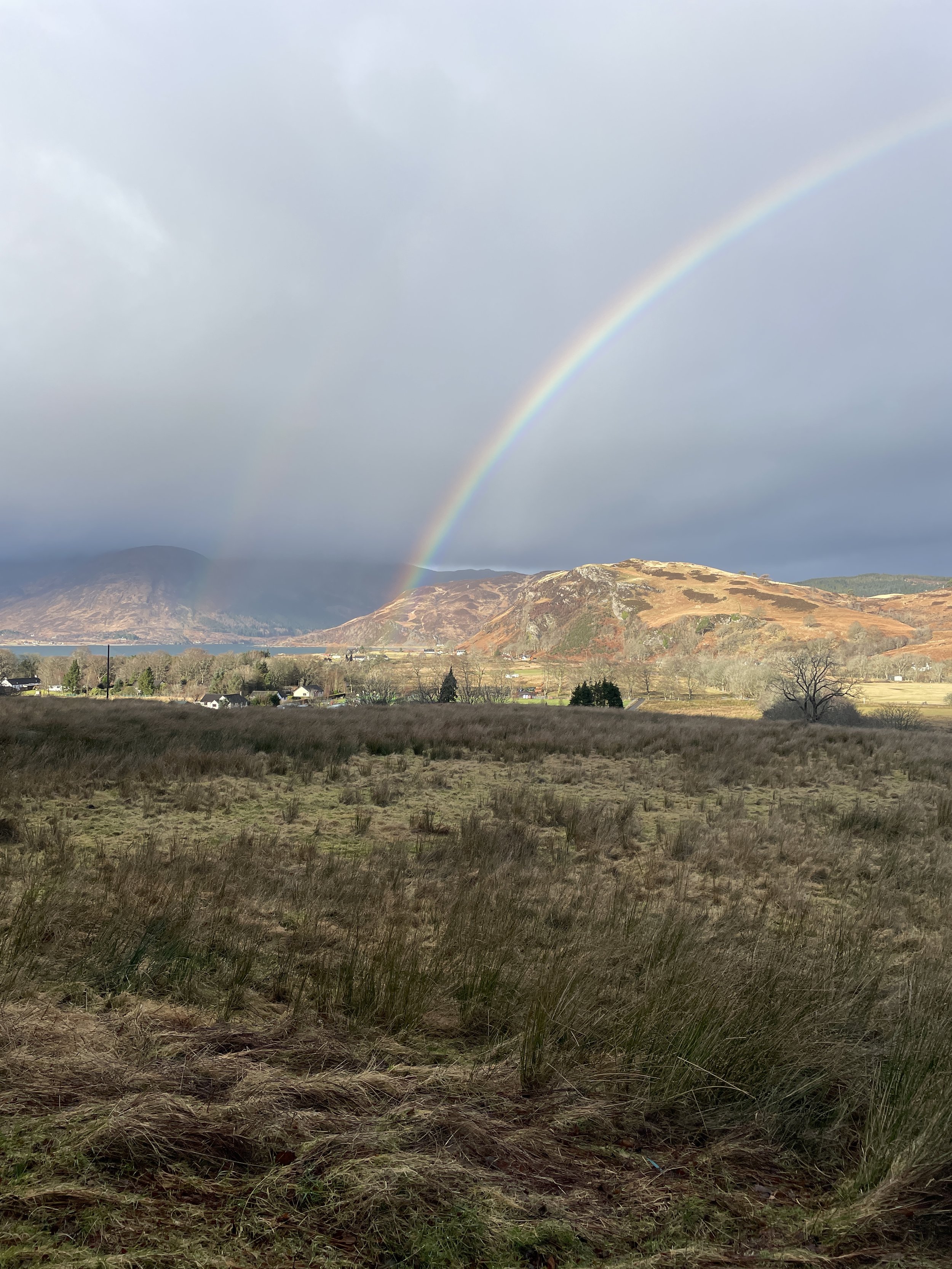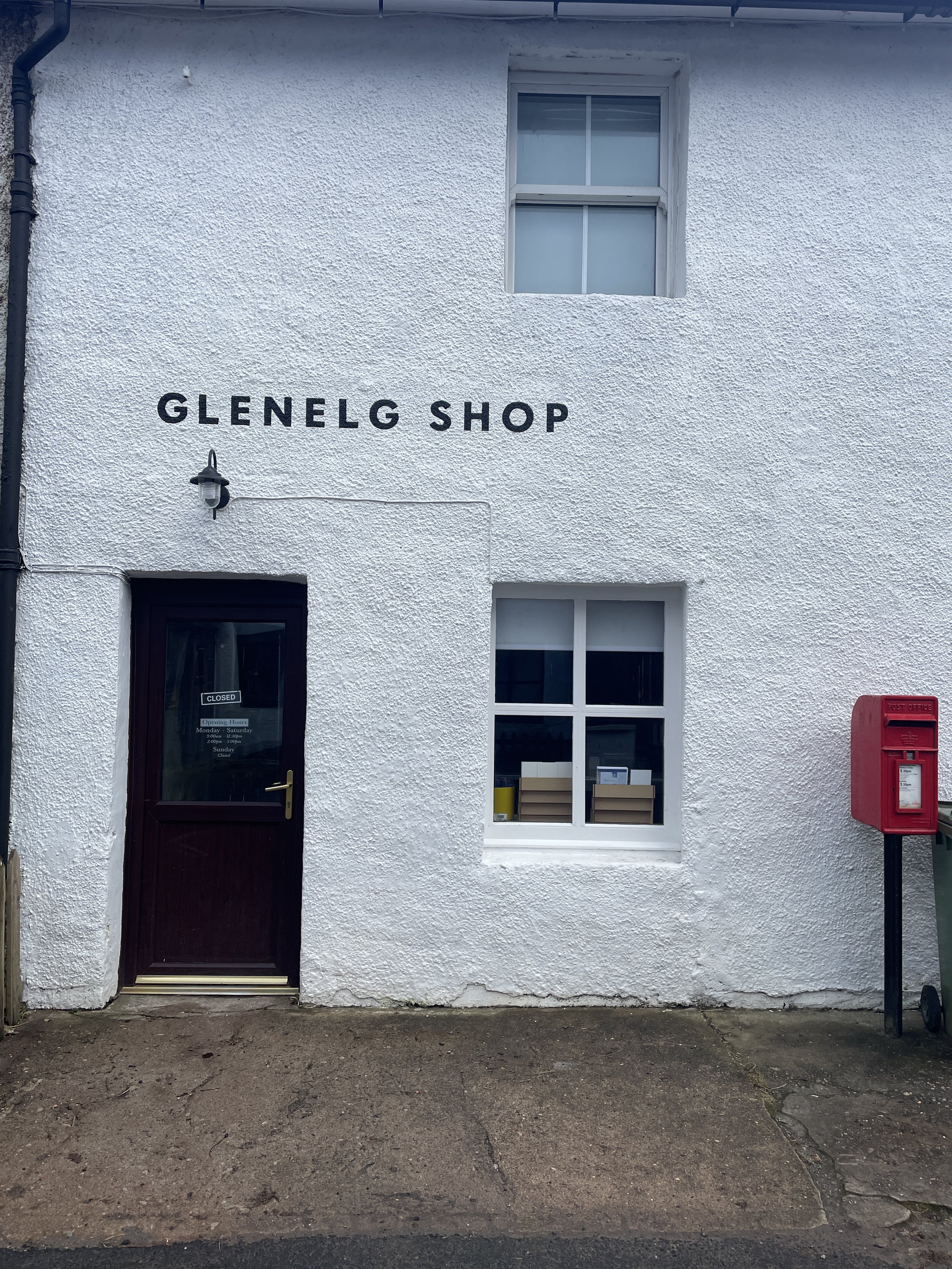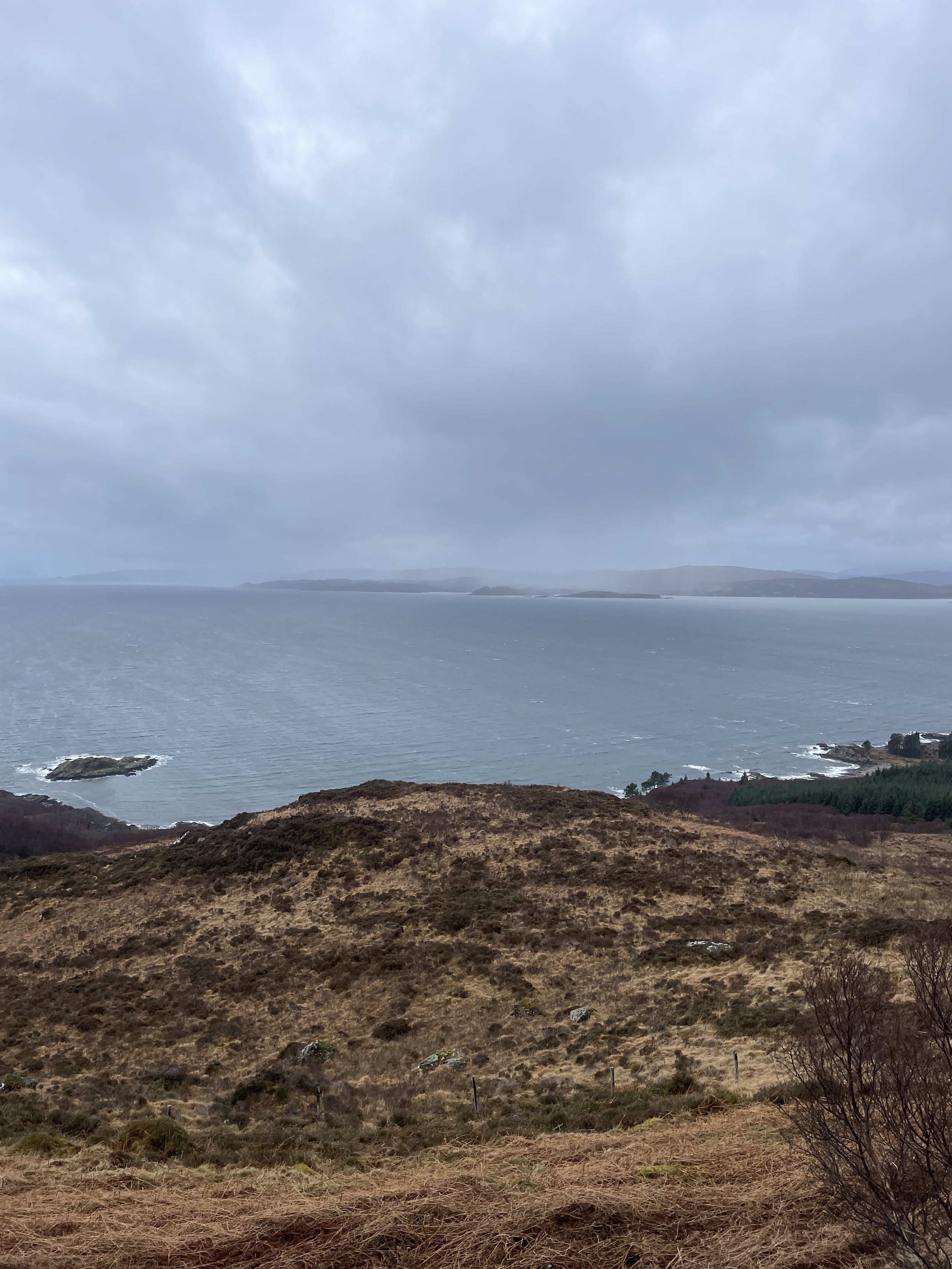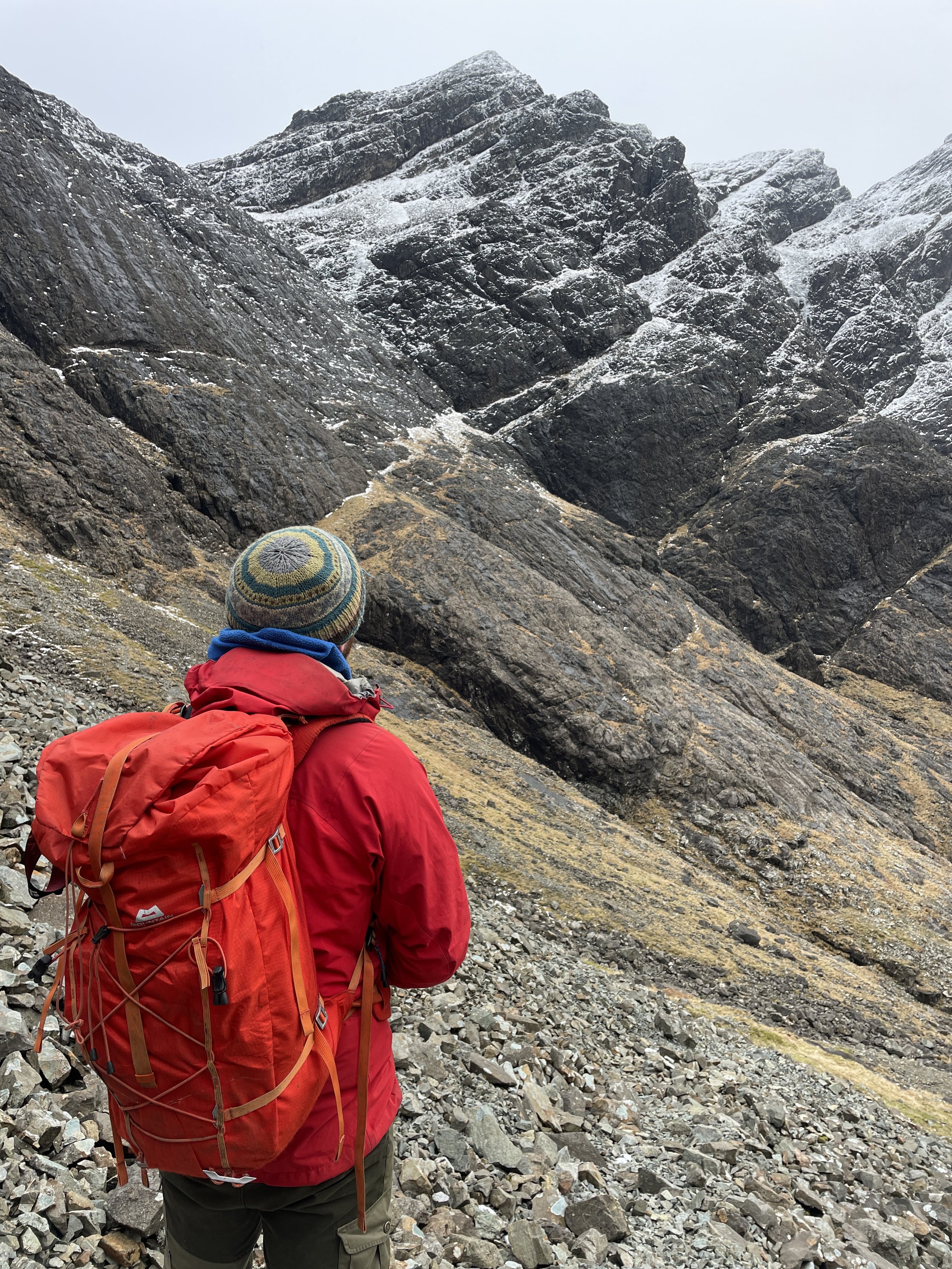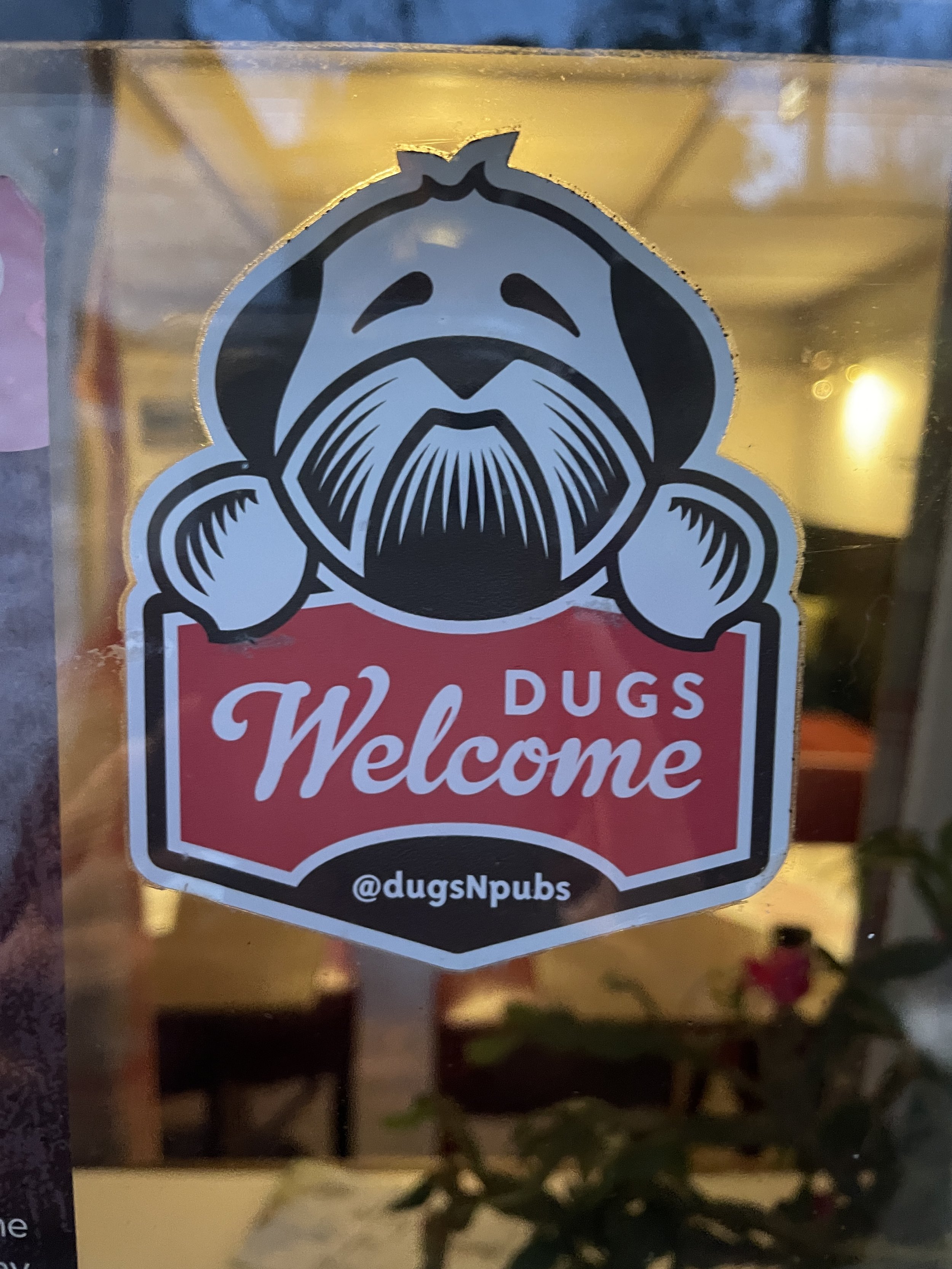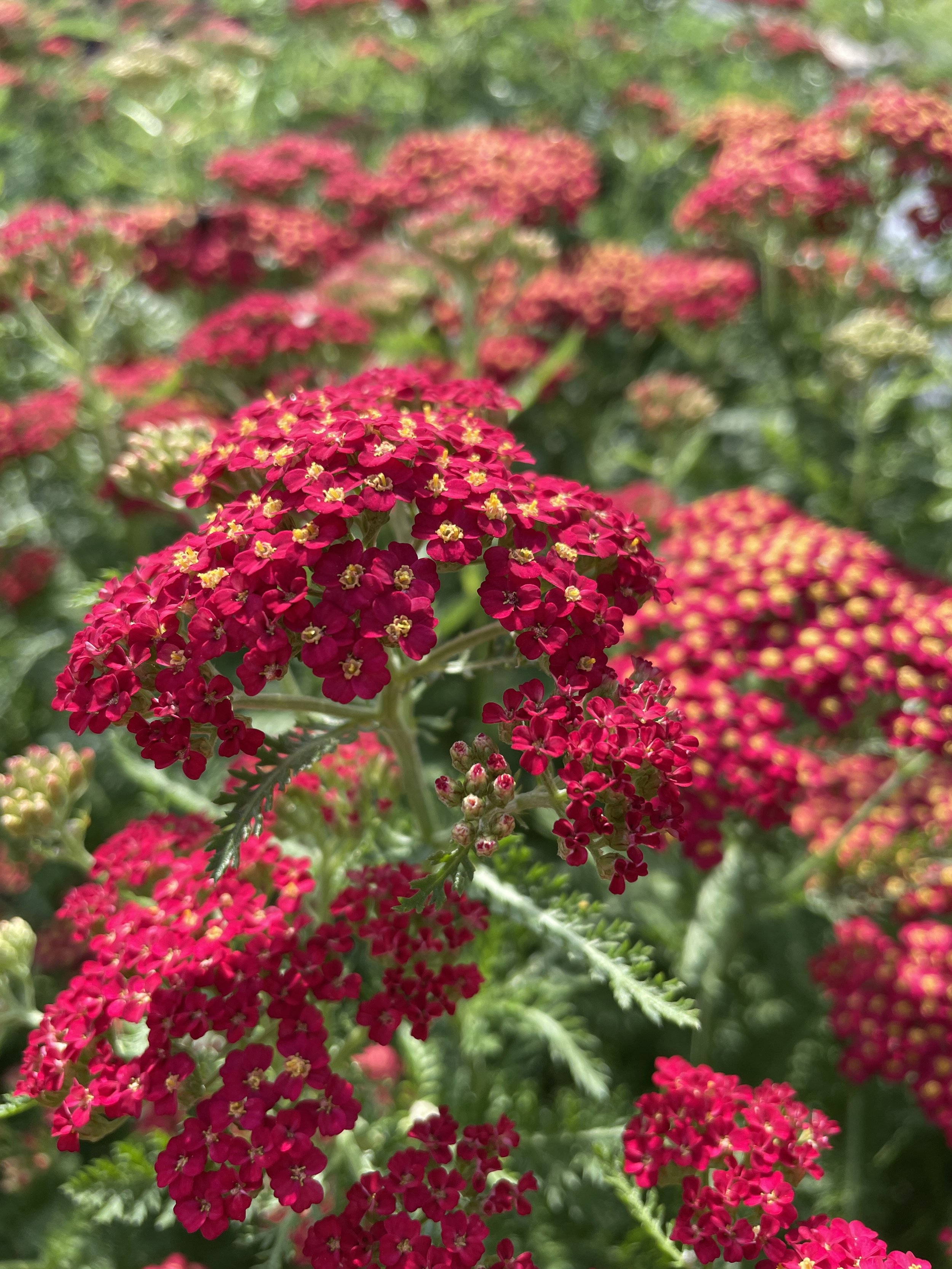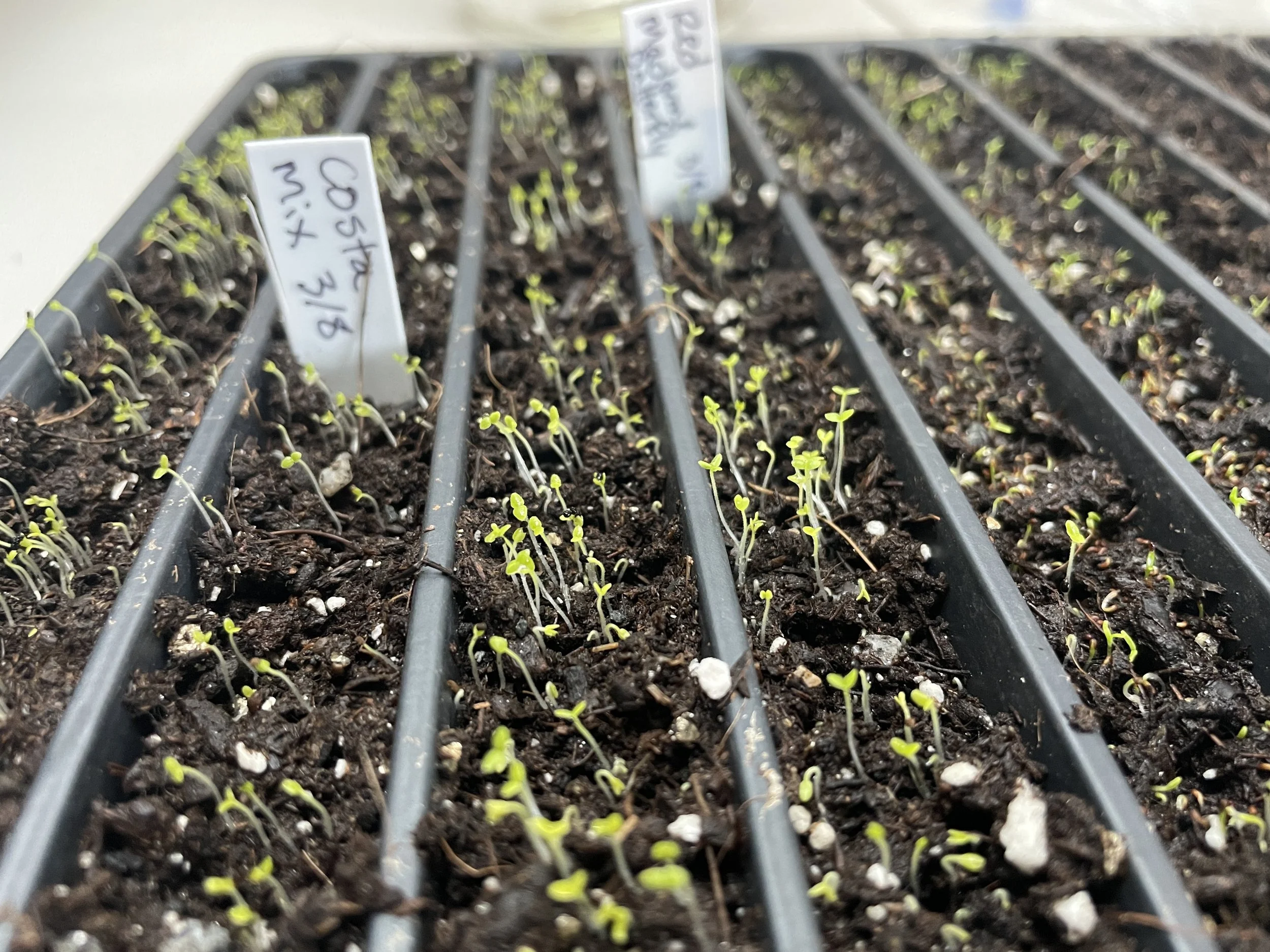Solo travel
My first day in New Zealand I was groped on a nude beach. I was surprised to find a nude beach in Auckland, but I was heady with jet lag and travel nerves and eager to jump into local life. So I stripped down and was sitting alone naked on the sand baking my pasty white American skin when a middle aged Australian man approached me. He sat down too close and began chatting me up in an eager manner. Minutes later he reached out and grabbed my boob. Stunned, I batted his hand away and yelled, “What are you doing?!” He retracted and muttered, “Oh, that was too much, wasn’t it?” “Yeah,” I exclaimed, “too much!” Then he got up and scurried off, as if the whole incident was just another run-of-the-mill rejection for him at a crowded bar.
I sat there shocked and embarrassed and dissociated. Wishing I had told him to fuck off when I started noticing warning signs in my gut. Frustrated that I didn’t do more to defend myself than just smacking his hand. Angry that my upbringing and education didn’t equip me with more competency for navigating the adult world. Alone, processing on that beach, I felt the full weight of my naivety come crashing down on me. This was the real world. Unexpected things can and do happen in any moment. I was blissfully underprepared.
I learned a lot that day about traveling solo as a woman. About being keenly aware of my surroundings. About the importance of listening to my spidey senses and taking action. About not getting lulled into a false sense of security just because a place is deemed ‘safe’ to travel to. New Zealand might not have any dangerous wild animals, but the world gave me a stern—albeit fairly benign—warning that humans can be the most dangerous and unpredictable animals of all. I never believed I could be assaulted in public, but it happened and it brought me down to earth hard.
For most of my 20’s I felt literally invincible. Like I was wrapped in a magical protective cloak and nothing could bring me serious harm. I was immune to things that mortal people succumbed to, like cavities (since I ate a pretty healthy diet) and sunburns (since my olive complexion meant I rarely had to use sunscreen). Note: promptly after being groped that first day I ended up with a second degree sunburn. Even lightweight clothing brushing against my skin lit my nerve endings on fire for a week afterward. It makes sense coming straight from Montana in January, sitting under a hole in the ozone layer for hours. Apparently I wasn’t immortal after all.
Thinking back on it now, it’s almost comical how many real life lessons the world slapped in my face that day. New Zealand was my first solo trip abroad and I had zero foreign travel skills. The main prep work I did consisted of reading the Lonely Planet Guide to Tramping in New Zealand, joining an online forum and getting a SPOT GPS in case of emergencies. I was decently comfortable with basic hard wilderness skills like backpacking on well-marked trails and multi-day camping trips. Luckily New Zealand had a top notch trail system, complete with signs at almost every juncture describing distance and approximate hiking time. I want to say there were even icons denoting fast (rabbit) and slow (snail) hiking times. Miraculous compared to Scotland! While I wasn’t Cheryl Strayding it in the wilderness by any means, I quickly realized I had many soft skills to cultivate as a woman traveling solo.
I hitchhiked. A lot. Hitching was common and had a fairly safe reputation in the country, which emboldened me to try it. Even though I was terrified in the beginning, I used my newfound gut-listening and awareness skills to catch rides that felt safe. I quickly came to love being on the move with my thumb. Riding with couples or other solo women was smart. Talking to the driver for a minute outside the car allowed me to size them up and gave me time to accept or decline rides. Carrying a paper map and knowing where I was on it—as well as the surrounding towns—reassured me the driver wasn’t deviating from the planned route and put my mind at ease.
The freedom and novelty of hitchhiking was thrilling. Every ride was a brief glimpse into a new persons’ life. So many incredible, kind-hearted folks picked me up. For the most part people admired my adventurous spirit and would go well out of their way to help me along, buy me lunch, offer a bed to sleep in, or show me local sights. Older couples often shared a mix of awe and concern for my safety as a woman traveling alone. Hitchhiking helped me learn to take risks while being cautious and enjoying the unknown.
I’d often turn up to new places with no plan and would have to figure out how to meet my basic needs—finding shelter and food—with very little information. Usually there was a hostel or campground about and I would wander around until I found a grocery store. I didn’t spend hours scrolling online reading reviews or pre-booking accommodations. I didn’t even have a smart phone to look things up or navigate. I just winged it. Which worked in my 20’s and was good practice for developing real life improv skills moment to moment.
I met several travel companions along the way. All American dudes I ended up not getting on with for one reason or another. The first guy I connected with in an online forum before arriving in the country. A city boy from Chicago. Great virtual conversationalist, miserable chat in real life. The second man was a toxic, manipulative narcissist guitar player. His idea of hitchhiking was sticking his finger out with casual arrogance, convinced for some reason that it looked cooler than using his thumb. Lesson: if drivers have are confused or have any reservations about you, they won’t stop. As a hitchhiker, be clear—just use your thumb. The third guy was an incessant talker. He couldn’t understand why I had never done drugs or smoked pot, and spent the entire 5-day backpacking trip on the Queen Charlotte track harping on me to try drugs. Mushrooms. Anything. By the end I wanted to strangle him.
Drug Guy was the last straw. Every time I ditched each of those travel companions I felt a sense of relief to be alone again on the road. I savored the freedom that came with traveling by myself, being unencumbered, moving and making decisions on my own terms. It was easy to meet people through activities like WWOOF’ing—volunteering on organic farms—striking up conversations with strangers in campgrounds and hostels, and busking on the street. I had my fiddle strapped to my backpack, covered with an oversized rain fly that made me look like a turtle carrying a large shell-home on my back. I’d stop in small towns and play music on the street for a couple hours, often making just enough money to buy supplies for my next tramp in the mountains. Music was—and still is—an instant connection-maker.
I grew up a lot in New Zealand over the course of 6 months traveling solo, acquiring many skills that I continue to use in my daily life almost 15 years later. Reading people, realizing I wasn’t invincible, being acutely aware of my surroundings, listening to my inner signals, embracing the unknown, improvising. I often think back on my time there and appreciate the gamut of experiences I had that helped me evolve as a human. From being groped and horribly sunburned to backpacking through jungles and volcanoes and mountains to facing fears and coming closer to myself. Each era of travel in my life brings different hard and inspiring lessons that only reveal themselves when I show up. There’s something strangely beautiful and addictive in that self-discovery that keeps me on the hunt for more.
Scotland--the Hot Aches
Winter 2024
Scotland was a profoundly horrible place and also magical place to travel in the winter. I decided to go during the bleakest time of year not because I’m a hardcore adventurist, but because it’s the only season I could take a vacation from my farm. The last time I traveled abroad I was 23 years old, backpacking-hitchhiking-busking around New Zealand for six months in the southern hemisphere summer. It was warm, cheap, and easy. Scotland in January in my late 30’s turned out to be an entirely different beast that chewed me up and spat me out hard.
Despite doing a fair amount of research beforehand, I was woefully underprepared for navigating a typical Scottish winter. It thrashed me to the core. Wet cold sunk down into my bones and held fast the entire time I was there. I couldn’t shake it, no matter how many layers I wore or how many hours I soaked in public saunas (where I also happened to contract athlete’s foot for the first time in my life. I learned hydrogen peroxide is nowhere to be found in the entire country.) The weather was ‘dreich’ as the Scots say. Rain came in a dozen different forms, from curtains blowing across the ocean to relentless daylong drizzles to five minute micro showers followed by breaking sun and rainbows. The wind blew for days. There were times when I was literally counting the minutes of sunshine I got on my skin.
Scottish folks kept their indoor spaces barely warmer than the out-of-doors. Maybe it’s because heating is so expensive, or maybe living close to the elements is how it’s been done for hundreds of years and they’re just carrying on the tradition. I don’t know, but it was miserable. In the winter I like to be warm and cozy in cold places. Over there I could barely function. Being cold for weeks on end wore down my reserves in a way I didn’t expect and almost broke me.
I prefer to travel alone, venturing to places where I don’t know anyone and meeting people along the way. It was so easy to do in the New Zealand backpacker scene in my 20’s. Staying at hostels, camping and encountering people on the road. But in Scotland, solo travel in my 30’s turned out to be downright lonely. Most attractions were closed during the off season and local folks seemed to be in hibernation mode, or vacationing somewhere warm, which would’ve been smart. I rented a car for several weeks—note: the roads are MUCH narrower than in America—and meandered around the country, loosely following the ghostly tourist trail up into the Highlands, staying in quiet guesthouses and tracking down a few friendly farmers to visit.
I also discovered that the Scottish wilderness wasn’t terribly accessible to lay people like me. The government wasn’t keen on signage or trails, in general. I considered myself lucky to find a marked trailhead, even luckier if there was a map, and pretty floored if there was an actual footpath. Mostly there were pull-offs with vague unlabeled routes petering out across boggy hillsides. It was confusing and frustrating. I learned that the lack of signage was meant to discourage tourists from embarking into the outdoors unprepared because it’s dangerous country. I get it. The stark mountain landscape was beautiful and raw. Empty, primeval and unforgiving. I got a taste of some of it as safely as I could manage with my limited outdoor skillset.
Despite the overwhelmingly cold and difficult times I had in Scotland, I encountered some unexpected heart-warming experiences that changed me in a deep way. After struggling to get by on this trip for a month and having very little fun, I finally gave up and decided to bail early. Then it’s as if the mysterious travel gods heard my breaking point snap and knew I let go. And with their magic invisible hands they scooted me into the path of an amazing person in a tiny seaside highland village where I found love. Ultimately change is what I needed from this trip all along, I realize. I wanted travel to crack me open, to usher in movement and give me perspective in my day-to-day life. I spent the last weeks of my time in Scotland having incredible chats in front of a wood stove, paying social visits to new local friends, scrambling up remote mountains with a knowledgeable guide, drinking gallons of tea, hauling logs through the mud, opening my mind and heart to new possibilities. That experience has been a much-needed catalyst, causing a ripple effect of positive changes in my American life and inspiring me to grow into a clearer version of myself. Scotland, in all its wild beastly-ness and sweet endings, transformed me into a better human. I never know where my travels in this world will lead, but as long as I can let go and embrace what comes, I know it’s bound to be somewhere good.
Tiny Potatoes
On being too small to matter…
It’s embarrassing being treated as if my business is too small to matter. I called a local printer company inquiring about thermal label printers for my home studio and the owner dismissed me with patronizing comments like ‘I’m not trying to chase you off [but actually…]’ and ‘Buy a cheap used Rollo off facebook marketplace [then call me in 5 years when you’ve reached a production level that warrants the real machines I sell]… I didn’t want to be told to buy a chintzy used piece of equipment and talked down to, I just wanted recommendations for something new that meets the needs of my home office and improves my workflow efficiency. At least the owner eventually did send me the follow up email he said he would, so that was somewhat redeeming. Needless to say, if I ever expand my business to the point of requiring a fancier printer, I probably won’t be calling that guy.
I’m sure he’s used to working with New England companies that need higher production level equipment, and he didn’t mean any harm by his comments, but I was still fairly offended. Even though I’m tiny potatoes in the business world, I still matter! Just because I don’t make six figures or move thousands of products per year/month/week, I still deserve to be treated like a viable business. Sure, selling less than 50 handmade items annually through my online shop sounds kitschy and insignificant from a capitalist point of view, but it’s a real part of my livelihood and it’s disheartening to get brushed off by other business professionals for being too small to bother with.
It’s stupid to let my self-worth get too entangled with my professional life. Normally I’m not too heady about things, but this modern mindset of basing ones’ personal worth on how productive you are or how much money you make is ridiculous. I feel like I have to come across as almost apologetic when I tell people about how small my business is, like ‘My gross income is only $30,000/year’ or ‘I’m just a micro flower farm growing on only 1/10th acre.’ But that’s ridiculous too. Being a self-employed small-scale farmer and craftsperson is a totally legit full-time business that supports my simple lifestyle. It’s my primary source of income; it’s hard work and I love it. I don’t want to keep expanding indefinitely, biting off more than I can chew, taking on employees, getting buried under more stress, having to make more money to stay afloat, keep running frantically on the hamster wheel till my little heart gives out from exhaustion. I’m managing my small business on a scale that works for me and I’m content being tiny potatoes.
After thought:
One of my favorite things about running my own small business is identifying parts of the system that aren’t running smoothly and trying different solutions to address the hang-up. E.g. shipping dried flowers in the mail. Up to this point, I’ve been printing address labels off at the little public library in town and taping them on boxes. Comical, I know! I have to make a trip down to the library during their limited open hours and the computers are maddeningly slow. It’s crazy inefficient and every time I walk out of there I think ‘I can’t stand this, I need to do something different.’ So I finally decided to buckle down and get a wireless thermal label printer to print sticky shipping labels off at home. I went down the rabbit hole researching different options—as I tend to do with all my business purchases—and decided on a Zebra ZSB thermal label printer, which seems like a good affordable option for small home business settings. Plus somehow their label cartridges are compostable (apparently made out of potato starch?), which reduces some plastic use, so I feel a bit better about that. I think this machine will totally meet my needs and make my shipping process a whole lot smoother.
Work/life balance
Work, work, work…
This season my business has been running me into the ground. Of course, as a one-woman show, I’m the boss making all the decisions, so I really only have myself to blame. It’s so easy to overcommit! I say yes to every feasible inquiry that comes my way then often end up scrambling to follow through. I cram too many tasks into one day and am constantly running behind because things always takes longer than anticipated. I’m glued to my phone fielding calls and emails from customers throughout the day, barely making any headway on essential garden tasks. I’m operating in this steady state of anxiety from the moment I wake up to the moment my head hits the pillow at night; constantly feeling like I have to get a handle on things before I can allow myself to relax. But that never happens. I never get to a point of being able to unwind.
My business becomes especially stressful when I get inundated with customer inquiries. Recently I realized that responding to customers in the moment was taking up so much time, it was causing me to fall behind on garden work. So I had to establish dedicated ‘office hours’—morning and evening times when I’m available to return calls and emails. I set up an auto reply email and voicemail message telling customers about my new office hours so they know when to hear back from me. I often feel that I have to reply to clients in the moment, even if it means dropping what I’m doing to respond. People driving by my garden must wonder if I actually work there or if I just stand in the field talking on my phone all day. It seems like there’s been a spike in demand this year for flower arrangements and events, which is great! But it just hasn’t been fun for me working in the garden, getting pulled away so much. Hopefully having office hours will help set customer expectations, allow me to focus on my farm work uninterrupted during the day, and relax in my downtime later in the evenings.
As a sled dog, I need to constantly stay busy with productive tasks in order to feel satisfied. If I’m not pulling on the harness, I get restless and anxious, which is a bad combo. It’s hard for sled dog types to fully relax, enjoy a vacation, or even make time for fun activities in our daily lives. Whenever I am doing something non work-related, my brain keeps either circling back to the laundry list of unfinished tasks waiting for me in the garden, ruminating on unresolved issues (in business + life), or planning for future things coming down the pike. When I’m working, my brain and body feel more at ease.
Work to me is fun, especially running my own farm business and wearing all the hats. I don’t even think about physical labor as being unpleasant or something other people don’t enjoy. I love the feeling of exerting my body, staying tidy and organized, taking care of business and checking things off my to do list. I like buzzing around like a bee during my work day to stay engaged and interested in the task at hand. When I get tired of one thing—depending on how urgently it needs to get done—I switch gears and do something else for a bit, then come back and pick up where I left off. When my energy starts waning in the evening, then I know it’s time to quit and I’m satisfied.
I prefer to work 90% of my waking hours and throw in short micro breaks here and there to stay refreshed and balanced. Going to an old time music festival for a weekend, checking out book stores or libraries, day hikes, saunas, traveling to visit flower farmer friends, campfires, shopping at plant nurseries, getting creemees.
Farming is full on in the summer here and I’m looking forward to traveling abroad this winter when I have a couple months of downtime.
What do you do to maintain a good work/life balance?
The struggles are real
Not super smooth sailing this spring so far…
This season has gotten off to a bit of a rough start, for some reason. Things just don’t seem to be gelling super well in the garden and I’m encountering more difficulties than in the past two growing seasons. I think I’ve gotten a bit lax and negligent about important things this spring, like monitoring the temperature forecast closely and studying up on fertility needs for certain crops. The plants are definitely letting me know something’s not right and I need to focus.
I grew some amazingly healthy, robust snapdragons and stock, planted them out a few weeks ago and they turned yellow and sickly. I did some triage soil amending when I noticed how bad they were getting—side dressed with blood meal and alfalfa for fast + slow nitrogen and foliar feed with liquid fish. It’s frustrating growing great seedlings just to watch them succumb outside. I don’t even want people to come to my garden and see how pathetic some of my transplants look. It’s embarrassing and I rarely ever say that! They did responded well to the nutrients and the new growth is much healthier now.
It also didn’t help that we got a frost one night the other week and most of my other new seedlings got fairly toasted. I saw that the temp was getting down into the mid-30’s but didn’t check the updated forecast that night thinking they’d be ok and left everything uncovered. ***Smacks forehead*** All my newly planted strawflowers got zapped along with feverfew, china asters, feathertop grass, even self-sown calendula. Ack! I was more prepared the next night when we got another harder frost. I covered everything with agribon which is supposed to give 4 degrees of added protection, and it worked. Nobody frozen! The seedlings seem to be growing out of it, but I’m checking the weather forecast multiple times a day now and am being much more proactive. I’ve learned that my real life garden temps are usually several degrees colder than the forecasted location. Sorry plant friends!
My garlic has also started looking crappy. Last fall I planted it into a winter-killed cover crop bed and mulched it with leaves. I thought I was so clever, that the cover crop would provide enough fertility/mulch and I’d just plant it and forget about it until harvest time. Clearly I didn’t do my homework about garlic fertility needs because it seems to be a heavy feeder and I was supposed to side dress with nitrogen in the spring. Oops! And apparently I’m supposed to pull the mulch back to amend the soil? Then some people leave the mulch off or some people just add amendments on top of the mulch. So again, more triage soil amending—I pulled the mulch off, side dressed with blood meal and watered with fish emulsion. Hopefully the garlic babes will be ok. Chris helped me with this task. I was venting about all my garden struggles and feeling frustrated about noticing the garlic issue late. He said ‘It’s ok, they [the garlic plans] told you. You listened. They feel heard.’ Haha! True. I’m doing what I can.
Then my f*ing phone stopped sending me missed call/voicemail notifications last week. Mother’s Day week of all weeks! I thought it was weird that I was getting zero calls for orders and when I finally checked I had 6 voicemails and had missed several customer inquiries for flower deliveries. Ugh! So I fell short on Mother’s Day, one of the biggest flower holidays of the year, thanks to my stupid phone. Come on world!
Plus my spring fresh flower availability is pretty sparse right around now and I’m feeling the pinch. This is by far the leanest time of the year for me in the garden. Since I don’t have a hoop house with blooms like tulips or ranunculus, I don’t have much to offer when people are in a flower feeding frenzy early in the season. I did make up some fun fresh + dried mixed bouquets for Mother’s Day. Yellow daffodils from my garden, foraged apple branches, blue forget me nots, and some funky dried materials (sun-bleached wheat, rat tail statice, dusty miller and rue pods). Originally I was turned off by the aesthetic of mixing fresh and dried flowers, but done tactfully, they look great together! I think it’s an under appreciated design technique and will be trending soon, if it’s not already.
The one good thing about all these difficulties is they’re not catastrophic and they’re good learning experiences. My farm hasn’t flooded or gotten destroyed in a windstorm or devoured by a herd of deer. I haven’t been evacuated due to wildfires or had to deal with anything serious that would cause my business to fold. I’m pretty lucky! I’m out in the garden every day monitoring, scanning for issues, noticing what’s changing and transpiring. The plants do tell me when they’re unhappy in subtle—and not so subtle—ways, like getting discolored or succumbing to aphids or stalling out. I notice issues cropping up then go down the rabbit hole researching how to resolve them and I always come away more knowledgeable.
This spring I just haven’t been as worried about everything as I have been the past two years flower farming. I’ve gotten lackadaisical. Normally I worry all the time about every little thing! Chris jokingly told me I wasn’t worrying enough this year and needed to worry more, haha! Somehow going into my third year I feel like a seasoned grower who’s got her shit figured out now and I don’t have to pay as much attention. Oi! I think nature is humbling me by throwing little curve balls to figure out. Just when I’m starting to feel on top of my game, another issue surfaces that I have to learn how to address. It’s equally maddening and refreshing at the same time and makes me appreciate the learning process more. My garden is a wise teacher and I’m reminded of that in new ways every year.
Favorite perennials
A few of my favorite perennials…
People often ask me what my favorite flower is, which is an impossible question for a flower farmer to answer. It’s easier for me to tell people what my least favorite flower is: cleome. I tried it once but the combination of spiky, sticky stems and smelly blooms with long feral cat-like whiskers was so unpleasant I quickly abandoned it. Back to what I like though…
I love, love love perennials! Especially easy to propagate and move herbaceous perennials—perfect for my small scale farm on leased land. One of my favorites is ‘Henry Eilers’ rudbeckia. It’s a 5’ tall rudbeckia with sprays of small gold quill-like petals. The sprays are nice and stiff and perfect for bouquet filler while adding structure. I love anything with quill petals—they add such a funky flare to arrangements.
I first saw this flower in the Von Trapp bouquets at the Hunger Mountain Co-op in Montpelier, then saw the plants growing at the Von Trapp display garden before it closed. Many people have them in landscaped beds in their yards around here. In fact I got all my plants from people giving away divisions in the spring or fall—for free!—and have been increasing my patch each year. Just ask around town and volunteer to dig up divisions from peoples’ yards in the shoulder seasons. I’ve been expanding my garden area just so I can keep accumulating perennials.
Yarrow
I think yarrow is an under appreciated perennial. I’m not crazy about the standard off-white medicinal type for bouquets, but I found a beautiful ruby red colored variety called ‘Paprika’ that I love and use a lot in my work. I bought one plant and have been dividing it each year to increase the patch. It spreads like mad and provides a stunning, vivid contrast next to any other color in arrangements, especially blues and golds. The stiff, straight stems with umbrella blooms are great for filling out bouquets and the color draws people in. I cut the plants back after the first bloom and got a second bloom but they got infested with aphids. I planted two other varieties of yarrow that I’m excited to try this year: ‘Terra Cotta’ (a sunset-hued color) and ‘Pomegranate’ (a more fuchsia/purple colored variety).
Northern Sea Oats
These are one of the coolest grasses I grow! The flat, fish scale panicles are green when fresh then mature to bronze as they age on the plant. They’re great dried and add a beautiful arching, airy element to arrangements (either fresh or dried). Since I just have 3 plants in my garden I use them very sparingly for special occasions or one per CSA bouquet. I also make sure not to harvest all the seed heads on my plants so hopefully they’ll spread by seed. I’m going to divide my plants and increase the patch this year because I always want more sea oats.
I’ll include more of my top plants (perennials, annuals, and bulbs) in future blog posts. So many favorites, so little time!
On adulting and being your own advocate...
Self-advocacy!
As I venture [rather] late into the world of adulting, I realize how important it is to be your own advocate. In business and in life, I’ve learned you have to educate yourself as much as possible in order to avoid being taken advantage of. I’m not a Negative Nellie who thinks everyone’s out to screw me over. But companies are in business for the money, as several recent encounters have reminded me, and I am the target, as a consumer and small business person. It’s stressful enough navigating unfamiliar territory as I grow my business without the added pressure of being on the defense against aggressive salespeople hungry to make a buck. Here are some insightful experiences I’ve had that have gotten me thinking about self-advocacy and being an adult…
In business:
I like most tasks related to running my own business but I f*ing hate shopping for insurance! It’s a confusing, exhausting, and stress-inducing experience that is, unfortunately, a necessary evil in the world. Lately I’ve been learning about all the jargon that’s involved with insurance policies and fielding calls from agent-sharks in a feeding frenzy who are either aggressively pushy or so indifferent they don’t bother to say ‘good-bye’ when they hang up the phone. I had one insurance agent tell me ‘If a hitch hiker from the road stumbles into your garden, steps on a rake and hits themselves in the face, they could sue you, so you have to plan for that.’ Seriously? A hitch hiker? Now it’s just turned into a scare tactic to get me to sign up for the most coverage possible which = more money for the insurance company. I think it’s totally practical to get a basic business owner’s insurance policy, but I’m not going to go overboard and worry myself to death about getting coverage for every little possible random scenario. It’s been such an unpleasant experience searching for insurance that I’ve been avoiding it for months. I’m doing the best I can to educate + advocate for myself and make a wise decision, then move on to more pleasant tasks.
Another business example: earlier this week a guy from Barn2Door called me and in quick, vague wording told me they work with farms in Vermont to market products. Ok, that’s great but nebulous. He then immediately began peppering me with questions about my farm— how much land I grow on, how many years I’ve been in business, what my sales outlets are, etc. The whole beginning of the convo happened so fast, I thought he was calling to see if I was hiring, for some reason, so I was very confused. After I answered his questions he gave me a more fleshed out Barn2Door elevator pitch and I realized he was trying to get me to sign up for his product, so I declined, saying that my current website works fine, but if I scale up, I’d check into Barn2Door in the future. He quickly exited the conversation with a dismissive and impatient ‘thanks for your time,’ and click, hung up on me. Nobody in the customer service field should hang up without saying good-bye. That’s just plain rude. At least, to his credit, he did ask if one of my main selling points for garlic braids was to ward off vampires! Business reps will sweet talk your ear off trying to get you hooked, then drop you like a hot potato when they realize you’re not interested. It’s good to recognize what their agenda is, have clear boundaries, and not take anything personally. I did treat it as a good sign that my little business is growing enough to show up on some Barn2Door dude’s search for Vermont farms to hound!
In life:
I recently got my first official credit card. Not necessarily because I wanted to, but more to build this magical thing called ‘credit,’ which is good for adulting, and to be able to rent a car while traveling. So many different companies, rewards, cash back, points, miles, sign up bonuses, converting points into other rewards, so much financial jargon in the fine print. Ay yi yi! Credit cards are the ultimate in American consumerism: incentivized spending, which I am not keen on. Some people get really into playing the rewards game to their own advantage. I’ll never be one of those people. Plus credit cards have always scared me. The though of being tempted to spend money I don’t actually have freaks me out. So in order to be smart about venturing into credit card land, I meticulously researched and compared different companies offerings, read the fine print, and listened to podcasts about how credit cards work before I applied. In the end I chose a simple card that gives me good, practical rewards for my everyday spending habits. I can’t say I felt great about getting a credit card, but I did learn what my credit score was, some basic financial terminology, and how to use credit cards in a safe, smart, and effective way. I’m teaching myself about adult financial literacy as I go, but I sure wish I had learned more about it in high school!
Venturing into the world of small business on my own has taught me many valuable lessons in adulting. I’m getting better at being my own best self-advocate and educating myself to make informed decisions along the way.
My farming evolution
Small farm beginnings to small business owner…
Old Time Flowers in Montpelier, Vermont.
Home garden. High school internship. Volunteer. Apprenticeship. Employee. Crew leader. Farm owner. My farm journey has been quite an adventure leading me to where I am today!
As a kid growing up in Bozeman, Montana we had a huge garden. My mom gave me my own little patch to tend; we grew ‘sumpmkins’—squash/pumpkin crosses—and played in the hog wallow, a mud pit in the corner of the garden made by letting the hose run. My official organic farming education started in high school in Alaska—a summer internship at the National Outdoor Leadership School in Palmer. I learned about composting, grew veggies for the outdoor programs students and staff, and slept in a wall tent, going home on weekends to do laundry. I finished high school early and immediately started volunteering on organic farms as a WWOOF'er (Willing Workers on Organic Farms) out west. Navigating the adult world on my own for the first time had its own challenges, but volunteering was a good intro to the organic farming world.
I went to massage school in Boulder, Colorado in my early 20’s and spent the next decade traveling around, alternating between seasonal massage jobs and farming endeavors. I’ve apprenticed on homesteads in Maine through the Maine Organic Farmers and Gardener’s Association (MOFGA), worked as an employee (on several organic veggie farms, a wholesale plant nursery, and seed companies across the US), WWOOF’ed in New Zealand, been a crew leader on an organic farm in Oregon, started a mixed market garden in North Carolina, and finally started my own small flower farm here in Vermont. Throughout my whole educational journey, I knew being involved in organic farming was meaningful work that I wanted to center my life around, but I didn’t feel deeply passionate about any particular enterprises. For the longest time I just wanted to be a self-sufficient homesteader and eschewed everything related to commercial growing. It wasn’t until I ventured into the world of self-employment that I started to warm up to the idea of farming as a livelihood and really come into my own.
My apprenticeship garden through MOFGA in Maine. I grew a lot of cabbages!
One of the most formative experiences that led me to start my own flower farm was being a crew leader on a small organic farm called Backyard Gardens in Joseph, Oregon. This tiny town in rural northeastern Oregon was one of the top three most beautiful places I’ve ever lived. Gorgeous high, dry mountains on the edge of the prairie, alpine lakes, canyons, wildflowers galore including a rainbow palette of Indian Paintbrush (my favorite wildflower), meadowlarks calling (my favorite bird), one main road through town, quiet and seemingly undiscovered. Joseph is definitely worth a visit if you’ve never been!
As a crew leader on this market garden operation, I developed an incredibly valuable skillset that I still use every day in my own farm business. Being able to multitask, manage small groups of people, keep track of many little details while maintaining a broader perspective, plan for CSA and market, have foresight and prep for what’s coming down the pike, work efficiently and manage time, identify bottlenecks and troubleshoot on the fly, and communicate instructions. All important skills that have helped me along greatly in business and life. The farm owner has passed away but I still pause in my garden and silently give thanks for how much that opportunity has helped me along in my journey.
Backyard Gardens in Joseph, Oregon where I worked as a crew leader for one summer.
Backyard Gardens booth at the Joseph, Oregon farmers market.
The second stepping stone leading me to my flower farm was starting my own mixed market garden, Homestead Gardens, in western North Carolina in 2019. I found myself down there after doing a work-study at the John C. Campbell Folk School. I was offered some land to grow on and that planted the seed in my brain for being self-employed. I worked 4 days/week at a wholesale plant nursery and devoted the rest of my time to my little farm. I discovered I loved everything about being my own boss! Managing my time and schedule on my terms, the responsibility and incentive, wearing all the hats, the self-discipline. I primarily grew veggies and experimented a bit with patches of flowers, including dahlias, which miraculously bloomed their heads off despite my limited knowledge. Looking back, I had absolutely no idea what I was doing with cut flowers. I sold $5 and $10 bouquets at a tiny farmers market an hour away. On my best day there I made a whopping nearly $200. I briefly had a one-person flower CSA which sadly ended in flames as I had to fire my only member for being rude and unreasonably demanding! Hard lesson in customer service and setting good boundaries.
Throughout the season I quickly learned how nuanced cut flower production could be—I was going to have to up my game and apply myself harder than I ever did with veggies! I realized there was the haphazard, dabble approach to flower production, which was an ok place to start but yielded unpredictable and mediocre results. And then there was the dedicated, obsessively detail-oriented approach to flowers, which was necessary to becoming a professional flower farmer. Learning a whole new realm of minute crop-specific details seemed both daunting and exhilarating. It fit my personality to a tee and nudged me further along the path towards my future flower farm.
My tiny, very humble farmers market booth in western North Carolina.
The third most formative educational experience I’ve had that really cinched the flower deal for me was working as a Gleaning Coordinator at the Johnny’s Seeds research farm in Maine the pandemic summer of 2020. My job was to harvest produce from the trial fields and distribute it to company employees. I also started experimenting with drying flowers and making wreaths, inspired by several small flower farms in Maine. This was by far one of the most unique and rewarding jobs I’ve ever had. The best part of my work was harvesting blooms from the flower trail fields, making bouquets and delivering them to employees at different job sites. Watching people light up when they received flowers moved me like nothing else in the farming world had. Someone described me as being a ‘Bringer of Joy.’ Ah, my heart! I realized this whole time I wanted to be a ‘Bringer of Joy’ and I had found my farm niche. I could combine my passions for flowers, organic farming and self-employment…It was time to start my own flower farm!
Delivering bouquets and veggies to Johnny’s Seeds employees in Maine.
In 2021 I finally started my own micro cut flower farm, Old Time Flowers, in Montpelier, Vermont! I found 1/10th acre plot of land to lease on a generous couples’ property, researched cut flowers in earnest all winter, made lists and spreadsheets and crop plans, hired a guy to rototill in the spring, and jumped right in. I joined the Association of Specialty Cut Flower Growers (ASCFG), the big trade organization for flower growing professionals. I learned a ton through their resources and asking questions. I started a cute honor stand in town that did well, had a small 10-person CSA—a much better experience than my first flower CSA in North Carolina!—sold dried wreaths + bouquets to local businesses, and did a few DIY weddings. That first season I worked a part-time job at a local native landscaping business to make ends meet. Once I got a taste for serious self-employment though, I found it difficult to work for other people. So my second growing season, 2022, I decided to work full-time for myself on the farm and it things took off! I increased my growing area using no-till methods, doubled my CSA, did many more special deliveries, increased my dried flower production and sales (including opening an online shop with shipping), sold part-time at the Montpelier farmers market and some lucrative winter holiday markets, and did more DIY weddings. I also took a farm business development course through NOFA VT which helped me organize my recording keeping and crop planning.
I’m excited to be going into my third year now at Old Time Flowers! I’ve learned and grown so much, both personally and professionally, over the past two seasons, I’m looking forward to seeing what 2023 brings!
Welcome + first seedlings!
Welcome to the Old Time Flowers blog!
My goal for 2023 is to share more of my flower farming journey with folks. In this blog I’ll be offering a behind-the-scenes look at my little operation: planning, growing techniques, thoughts on small-scale flower farming and business. Plus posting about some of my travel adventures too.
It’s hard to believe this is my third season growing cut flowers in Vermont! Every year I learn new skills, hone my growing and business chops, make improvements, work on becoming more efficient, and strive to have better work/life balance. I’m already going into this season feeling more organized—thanks to many spreadsheets in google drive!—and excited to incorporate new changes into my business throughout the year. I’ll be sharing more about new things coming up for OTF in future blog posts.
Small-scale crop planning: how I decide when to start seeds…
This is Week 11. Last week I started snapdragons and icelandic poppies! I’m in zone 4b in central Vermont and my last expected frost date is May 20th. Since I don’t have a hoop house, I rely cold hardy annuals (and perennials!) for my early season field-grown blooms. I’ve found cold hardy annuals can be planted out several (2-3) weeks before my last frost date. Definitely not 6-8 weeks like Lisa Mason Ziegler recommends in her book Cool Flowers. That’s way too early for field-grown flowers where I’m at in Vermont.
The past two years I transplanted my snaps and poppies 4 weeks before my last frost date, under row cover hoops. From keeping field records, I know that we’ve gotten a heavy, wet snow on April 20th, and it was a pain going out to brush snow off the hoops so the seedlings didn’t get crushed. This year I started my early flowers a bit later and plan on planting them out 3 weeks before last frost, hoping to miss the big late snow. We’ll see how this works!
Seed starting…
Since I’m growing on such a small scale (1/10th acre) I start all my transplants indoors under grow lights. I have two metal bakers racks from Lowe’s and they each have 4 shelves. They’re 4 ft. long x 2 ft. wide, so each shelf can hold 4 standard size plug trays. There are 2 grow lights per shelf that are attached to chains so they can be raised and lowered to be close to the seedlings. For lighting I use a combo of 1) fluorescent shop light fixtures with replaceable T8 6500K LED bulbs and 2) regular built-in 5000K LED light fixtures from Lowe’s.
For soil mix, I use Vermont Compost Fort Vee and mix in extra perlite myself. I’ll probably just switch to Fort Light next year.
I sow seeds in row trays, cover with plastic wrap and put on a heat mat. When the seeds start to germinate, I take them off the heat mat, remove the plastic wrap, and turn on the grow light, raising up the tray so it’s a couple inches from the light. Once the seedlings get a set of true leaves in the row tray, I prick them out to 128 plug trays. This ensures that each cell has a viable seedling (compared to sowing seeds directly in plug trays and ending up with some empty cells where seeds didn’t germinate). Pricking seedlings out is a bit time consuming but has worked great for me at my small scale and allows me to maximize my limited space to the fullest.
I have a 10 outlet power strip plugged into a wall timer for the lights. The lights are programmed to stay on for 14 hours/day (7 AM-9 PM). I should probably keep the lights on longer, but this worked well for me last year.
To water when the seedlings are super small, I mist with a spray bottle. As they get bigger I bottom water by putting the trays in a plastic painters tub with a couple inches of water in it. The trays soak up water and I know they’re ready to take out when the soil surface of the plugs starts glistening a little.
I’m using Winstrip trays from Neversink Farm this year for the first time. They’re air pruning, which means each cell has empty slits cut out of the sides. When the seedlings’ roots hit the air they branch and create more roots, which supposedly makes for a stronger, healthier root ball. We’ll see how these trays work; they were expensive but apparently last 10+ years! Regular cheapy plastic trays only last a couple seasons before they fall apart and end up in the dump, so I’m happy to reduce my plastic waste with durable trays. I haven’t really been keen on or tried soil blocking, though some growers are really into it.
I’d love to hear how other small scale flower farmers have their seed starting systems set up! Shoot me an email, DM on Instagram or leave a comment below.
